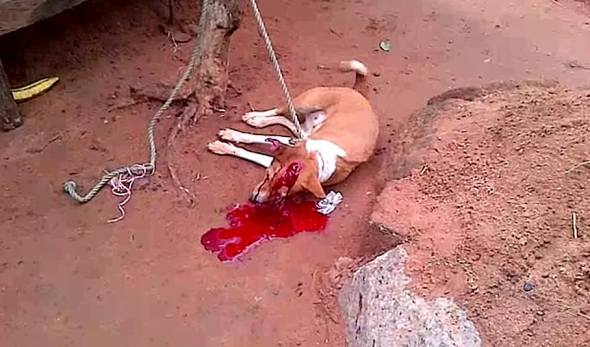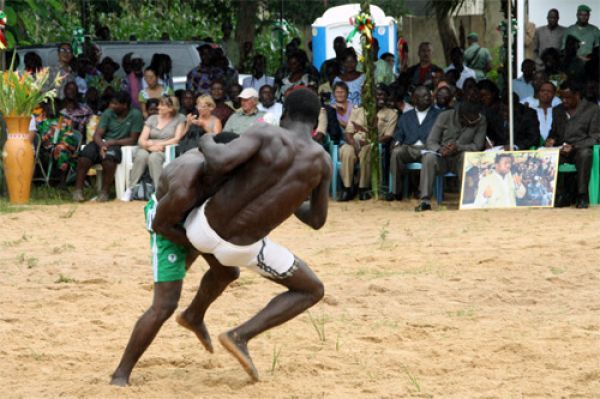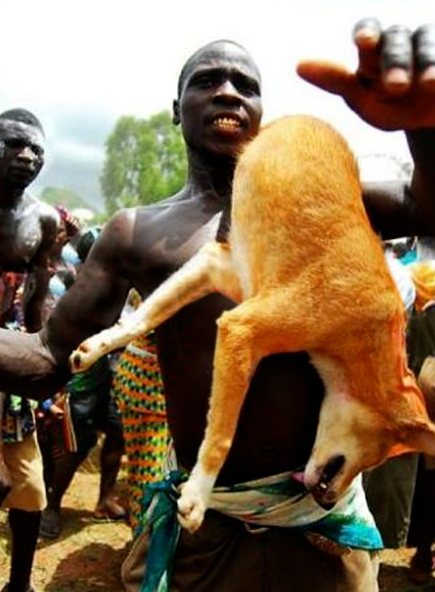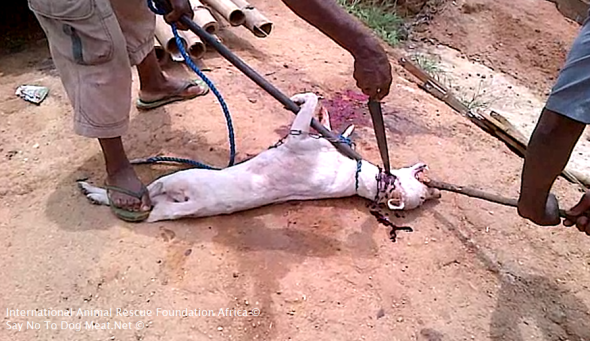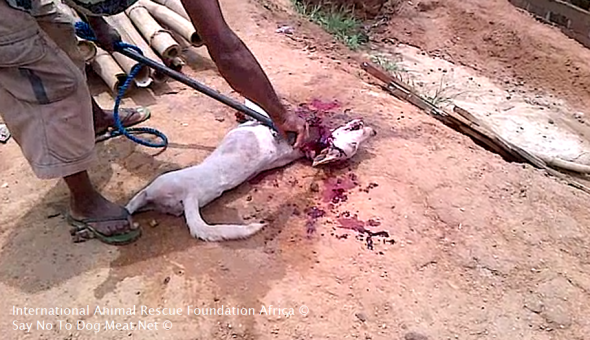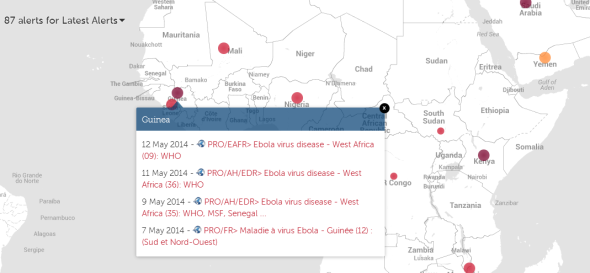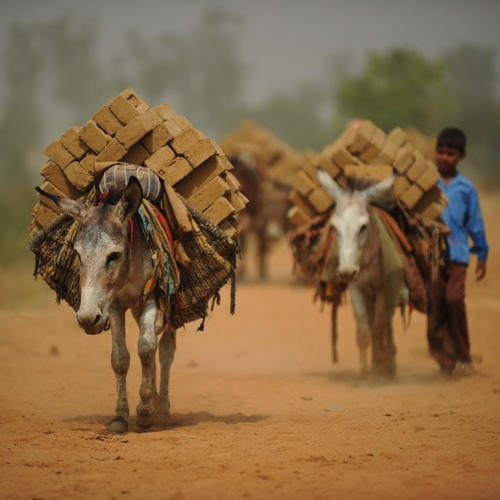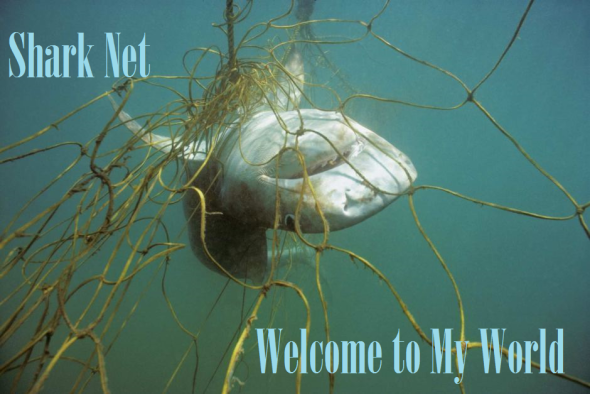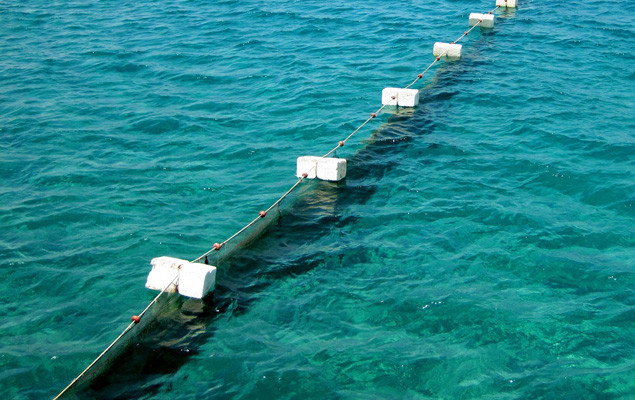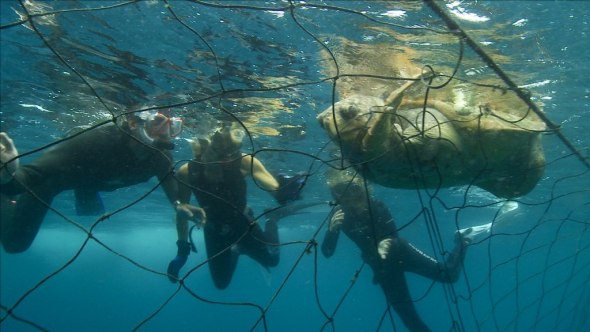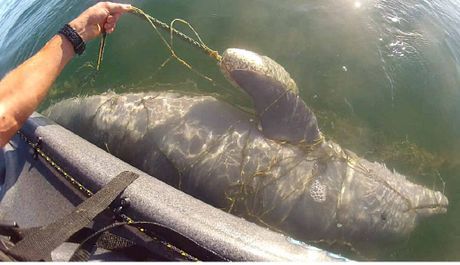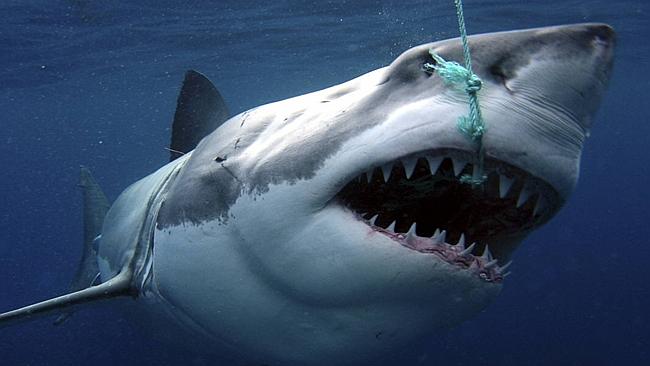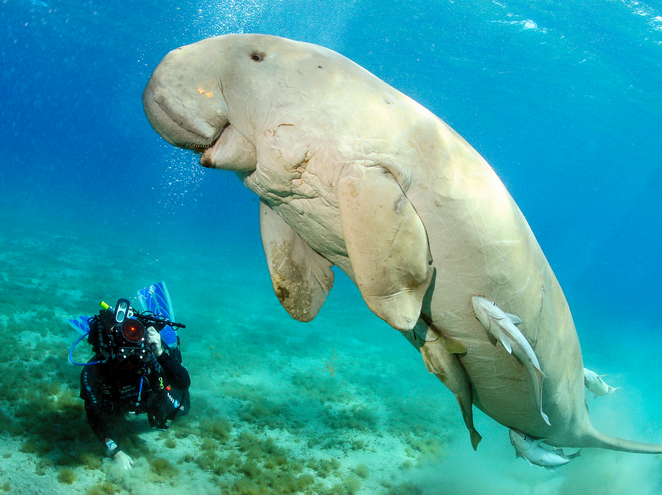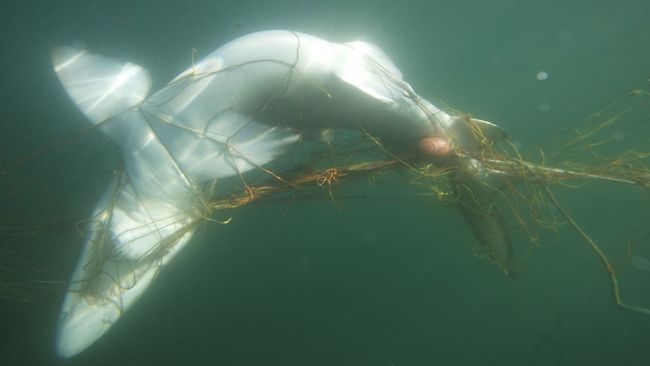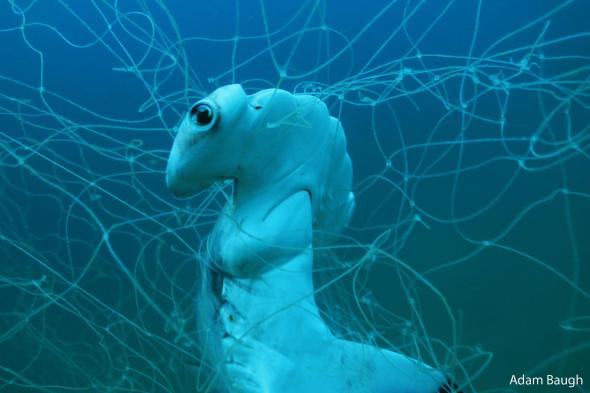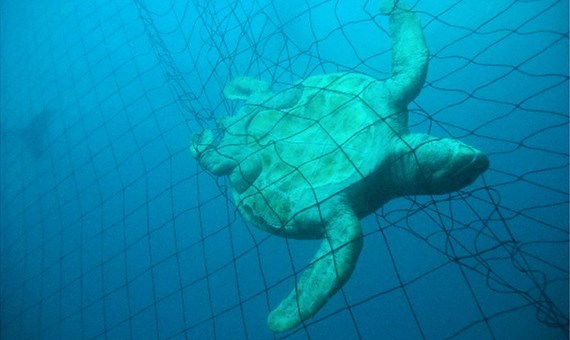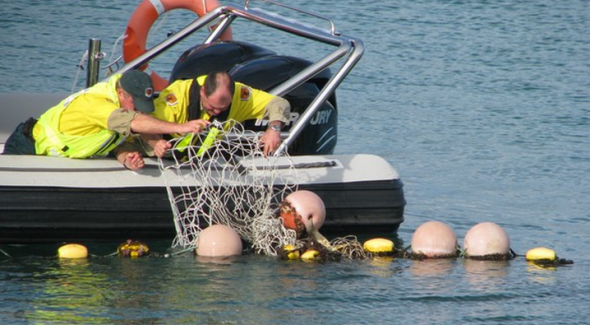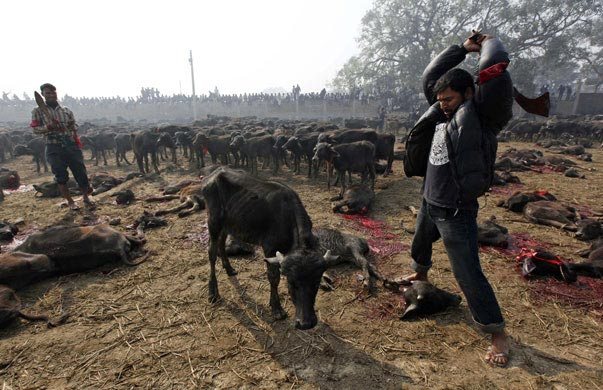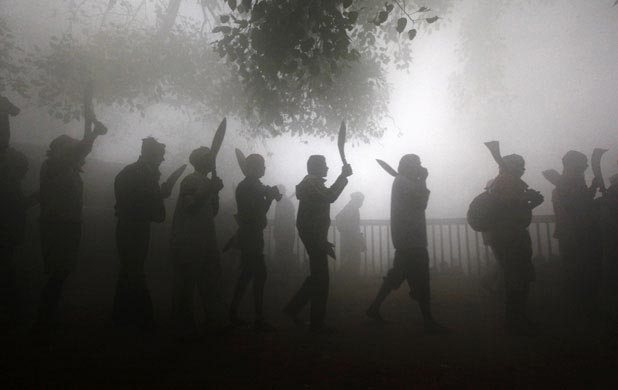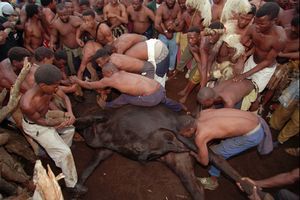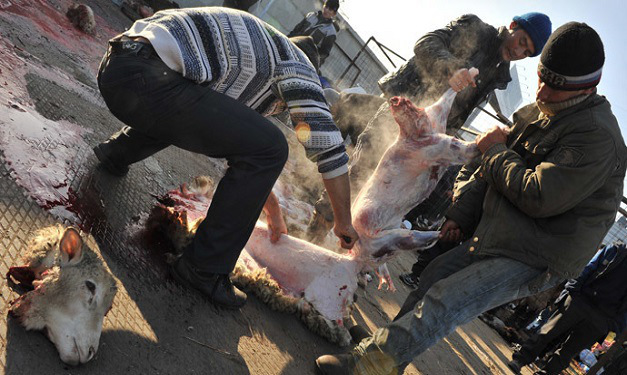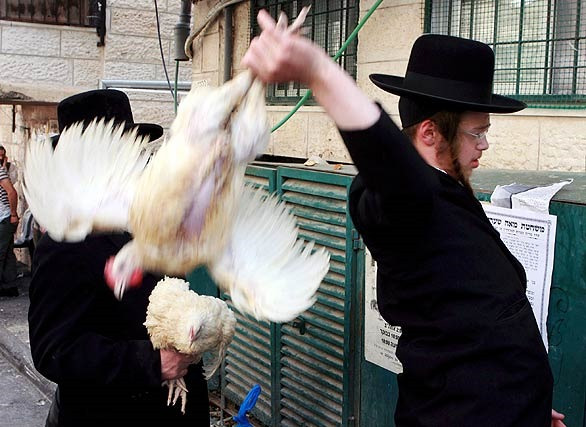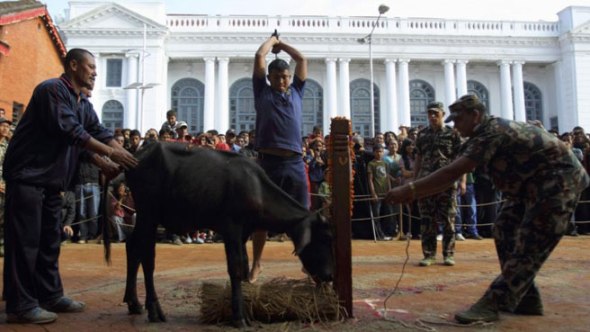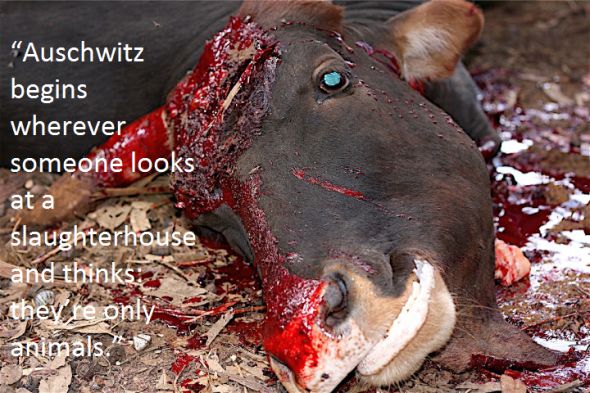Bird Nest Soup Mafia - China & Thai Connection
The history of Chinese cuisine is marked by both variety and change. The archaeologist and scholar K.C. Chang says “Chinese people are especially preoccupied with food” and “food is at the centre of, or at least it accompanies or symbolizes, many social interactions.” Over the course of history, he says, “continuity vastly outweighs change.” He explains basic organizing principles which go back to earliest times and give a continuity to the food tradition, principally that a normal meal is made up of fan (grains and other starches) and cai (vegetable or meat dishes).
History;
Is Chinese cuisine culture going too far though? That is the moral question I asked myself some eight years back when visiting China and their lavish cultural food stalls and Traditional Chinese Medicine (TCM) markets. This week we look into China’s most lavish and expensive dish commonly referred to as yàn wō (燕窝), which translates literally as “swifflet nest” or (swallow nest). Yan wo is not only killing our swallows off it also accounts to numerous deaths per year of those whom dare risk their lives just to harvest a nest deep within caves, money is big business within China and these nests don’t come cheap neither.
The most famous use of edible birds nest is bird’s nest soup, a delicacy in Chinese cuisine. When dissolved in water, the birds’ nests have a gelatinous texture used for soup or sweet tong sui. It is mostly referred to as “yan wo” unless references are made to the salty or sweet soup in Chinese cuisine.
In addition to its use in soup, edible birds nest can be used as an ingredient in many other dishes, it can be cooked with rice to produce bird’s nest congee or bird’s nest boiled rice, or it can be added to egg tarts and other desserts. A bird’s nest jelly can be made by placing the bird’s nest in a ceramic container with minimal water and sugar (or salt) and double steamed. Ready to eat bird’s nest jelly is available in jars as a commercial product.
Harvesting the birds nest is no easy task too, attached or glued high up in caves Asian collectors go to great lengths to harvest these nests regardless of whether the nests have new young within them or if the mother swift is about to lay her eggs. The nests themselves are tiny translucent cups about the size of a small egg. They are made by the male swiftlet from glutinous threads of its own saliva, which it weaves into a cup that dries to become thin and translucent like fine porcelain.
Chinese parents feed bird’s nest soup, cooked with chicken broth or coconut milk, to their children in the belief that it will improve their complexions, promote growth and generally act as a tonic. Recent research has indeed shown that the nests, which taste rather like noodles, contain a water-soluble glycoprotein that may promote cell division in the immune system. However there are no real scientific studies that actually pin points any form of “medicinal properties” within birds nest that actually increase human health although this is being debated heavily at the moment.
Nest collecting is skilled and dangerous work, high up on the ceilings of the caves the intrepid collector shins barefoot up rickety trellises of bamboo scaffolding, ropes and bridges, tapping as he goes (see pic below - shadow hunters) to make sure the bamboo is sound. He lights his way in the black caves with a torch of bark soaked in resin held between his teeth and uses a special three-pronged tool called a rada to harvest the nests. To use bare hands to pick a nest displeases and angers the gods. (If interested please do purchase the book shadow hunters of which is a really inspiring good read - click on the link shadow hunters above).
If a nest is too old it cannot be made into top quality soup, but can be made into second rate soup. A nest needs to be made from fresh saliva, with no feathers or dirt. A fresh nest is white, an old one is black. A bird’s nest is made of nothing but saliva: no twigs, nothing else. It is made in a similar way to fibreglass, with the bird laying lots of threads on top of each other.
A sustainable supply of birds’ nests is ensured and the survival of the species is allegedly protected because nests are collected only when empty. The most productive island for nests is Koh Petra, from which over 100 kg of nests are collected 3 times in a good year. Koh Lao Liang supplies about 30 kg of nests 3 times a year. After the chicks have flown away the mother will eat the nest in order to replenish her energy supply. The collectors, of whom there are 60 in the Koh Petra Marine Park, must find the nest before the mother eats it.
Threats;
International Animal Rescue Foundation Asia argue this alleged sustainable use as evidence has pinpointed the collection of bird nests within China and Thailand is actually placing both Aerodramus fuciphagus and Aerodramus maximus (White Nest and Black Nest Swiflet) in danger. I must also point out that there is also a significantly high risk of contracting Avian Influenza (CDC) from the illegal importation of bird nest soup and it’s selling on the streets and in high classed restaurants throughout Asia.
Nothing that a Chinese host can put on a table has more cachet than a bowl of viscous bird’s nest soup. For centuries, it has been a delicacy throughout the Chinese world, a dish famed for its ability to keep people young and healthy. But bird nests are becoming increasingly scarce. While the shortage is not yet a crisis, Chinese connoisseurs are obliged to pay more each time they bargain for nests - up to $1,000 a pound for top-quality nests.
”The price will definitely continue to increase,” Stephen Tam, owner of the Cheong Loong Swallow’s Nest store, said as he sorted the dozens of varieties of nests in his small shop here. ”Most places the birds live have been developed into farmland or towns, and that reduces the number of birds that are left.” In addition to the encroachment of humans on the birds’ habitat, pollution is eroding some of the cliffs where they live and build their nests. Meanwhile, rising prices are leading the ”harvesters” of nests to become more aggressive, sometimes snatching nests as soon as they are built, or grabbing nests that have eggs in them which is quite the opposite to what has been alleged by few American supporters of this trade that stated;
“A nest needs to be made from fresh saliva, with no feathers or dirt. A fresh nest is white, an old one is black. A bird’s nest is made of nothing but saliva: no twigs, nothing else. It is made in a similar way to fibreglass, with the bird laying lots of threads on top of each other”…
The nests used to make the soup belong to a kind of swallow, which builds on rocky cliffs or inside caves in several countries in Southeast Asia. Most of the nests today come from Indonesia, Thailand, Malaysia, Vietnam or China.
The nests are not, as most Americans assume, a thatch of twigs and grass such as a robin might manufacture. Rather, they are made of the birds’ saliva, which hardens into cement-like threads. When collected, the nests contain liberal amounts of feathers and even droppings, but are carefully washed and cleaned until they are white strips that look more like sponges than nests. While swallow saliva soup may not send tingles across a Western palate, the Chinese rave over it. It is usually cooked with crab meat, shrimp or ham to make a gelatinous soup that is renowned principally for its healthfulness.
”The taste of the nests is nothing great,” said Fok Kam Tong, head chef at the Man Wah Restaurant in Hong Kong’s Mandarin Hotel, where a bowl of bird’s nest soup ranges in price from $14 to $38. That is why crab and other embellishments are added, he said. But bird’s nest soup has virtues other than mere taste. ”It’s very good for you, very nourishing,” Mr. Fok added. ”It’s good for women, for their skin, so they don’t look old. But it’s not just for women; it’s good for everybody.”
Mr. Fok disputes the pessimists who say that bird’s nest soup could eventually disappear. While scarcity of the proper nests is a concern, he and many Chinese food experts say, the resulting price increase would make it even more prized as a delicacy.
”If it becomes more expensive, it will be even more popular in Hong Kong,” said Sunny Lan Kun Ying, a salesman at Yuen Wo Bird’s Nest store near Hong Kong’s business district.
Not according to the owners of the small Hong Kong shops that sell bird nests, who say most people are being priced out of the market. The cost of bird’s nests has more than doubled in the last few years, they say, making it more difficult to afford a nest for a daughter with a skin blemish or a son who is about to take an important examination. Some kinds of nests are becoming particularly rare, such as the red ones called ”blood nests.” These have a reddish tinge that chefs say derives from blood in the birds’ saliva. It is even better for one’s health than regular bird nests, they say.
So, while regular bird nests sell for about $500 for a catty - a Chinese unit of weight amounting to just over a pound - the best-quality blood nests sell for nearly $1,300 a catty at the most exclusive shop. Meanwhile, the swallows are seeking more and more remote locations to build their nests in places where humans will not intrude. They must avoid not only youths who scamper along the cliffs or climb bamboo scaffolding to cave ceilings, but also monkeys that have been trained to climb the rock walls and retrieve nests. However as the nest price increases so does the demand and the more demand increases the greater threat of looming extinction arises with regards to these birds.
”The swallows are very careful,” said Mr. Fok, the chef. ”They will never build a nest where it is easy to get to, hence why there are so many human fatalities at every year”.
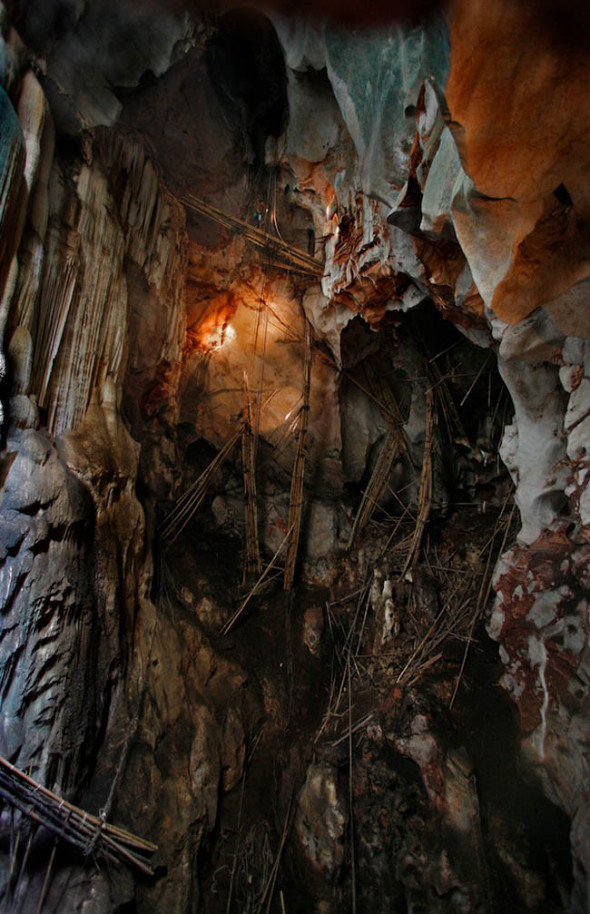
Picture by Eric-Valli - depicting a cave in which bird nest hunters climb to obtain this very expensive delicacy. Please click on the picture above to view more of Eric Valli’s work - Shadow Hunters.
Bird Nest Soup – Pushing species into decline;
Threatened status is only a step away.
Identified by Thunberg, 1812 the Aerodramus fuciphagus commonly known as the Edible-nest Swiftlet is currently listed as (least concern) however does not mean for one minute that their moving to endangered level. Population size is now on the decrease with regards to both species and to date there has been no collated date to prove populations are increasing since last surveyed back in 2012. Despite the fact that the population trend appears to be decreasing, the decline is not believed to be sufficiently rapid to approach the thresholds for Vulnerable under the population trend criterion (>30% decline over ten years or three generations). The population size has not been quantified, but it is not believed to approach the thresholds for Vulnerable under the population size criterion (<10,000 mature individuals with a continuing decline estimated to be >10% in ten years or three generations, or with a specified population structure). For these reasons the species is evaluated as Least Concern.
Back in 1878 Collocalia maxima known to as (Aerodramus maximus) was identified by Hume. Again as with Aerodramus fuciphagus this species is also on the decline of which is listed as least concern. Least concern may not seem significantly worrying, however its one step away from (near threatened) so as long as bird nest harvesting continues and prices increase nests and their young will be placed in furthermore danger. Black nest swiflet - Despite the fact that the population trend appears to be decreasing, the decline is not believed to be sufficiently rapid to approach the thresholds for Vulnerable under the population trend criterion (>30% decline over ten years or three generations). The population size has not been quantified, but it is not believed to approach the thresholds for Vulnerable under the population size criterion (<10,000 mature individuals with a continuing decline estimated to be >10% in ten years or three generations, or with a specified population structure). For these reasons the species is evaluated as Least Concern.
Medicinal properties;
Please note before reading on - there has been no real scientific studies that have ever proven bird nest soup can cure; Cancer, HIV, AIDS, Pancreatic Cancer, Avian Flu, Human Influenza, Diabetes, or improve human complexion. All studies that I myself a veterinarian and environmentalist have researched indicated that research around bird nest soup still remains to this very day “mysterious”.
On my travel to China of which I was investigating the wildlife parts trade me and my colleagues uncovered quite a significant find. Many animal parts that were being sold under the guise of “healing foods and traditional medicine” had been soaked in synthetic pharmaceutical medicines. Read more here - http://www.cites.org/eng/com/sc/62/E62-47-02-A.pdf
This find not a rare find but an important one informs us that demand will continue to rise due to this practice. People buying animal parts such as Rhino horn powder, Tiger bone wine even sea horses are being fooled into believing that the animal parts they are digesting are “naturally” healing them. However in reality the only properties that are healing, reducing pain, inflammation or influenza are animal parts laced with antibiotics, NSAIDS, and neurological antidepressants and sexual performance prescription medications. Whilst this practice continues and in the eyes of the law demand will continue of which individuals that buy into this trade actually believe animal parts are curing them. The fault lays not with the peddlers as such but more the manufactures of pharmaceuticals that must take responsibility.
Picture above - Indonesia, Java hundreds of thousands of bird nests are allegedly harvested then replaced with a synthetic nest that the harvester quoted “sustains the species”.
In some documents provided by the distribution of bird nest, the nest is said to have many nutritional rare, typically some kind of protein and amino acid amide, humin, arginine, cystine, histidine, and lysine. In addition, oats also contain minerals such as calcium, iron, potassium, phosphorus and magnesium. Effects of oats, some documents that oats aid in the lungs, strengthen the body, boost the immune system, accelerate cell regeneration, help with rapid recovery, and even support disease against HIV AIDS. (There is NO scientific data that proves bird nest soup has ever had any impact on individual suffering from human immunodeficiency virus and (acquired immune deficiency syndrome.
Science cannot yet explain the healing powers attributed to the soup, they conclude. Birds’ nests “bioactivities and medicinal value are still open to question as there (is) not much scientific research on the medicinal properties,” Fucui Ma and Daicheng Liu of Shandong Normal University in China wrote in a review article published October 2011 issue of the Journal Food Research International.
Swiftlets live in limestone caves around the Indian Ocean, in South and South East Asia, North Australia and the Pacific Islands. Males primarily build the nests, attaching them to the vertical walls of the caves. Removing them can be dangerous and painstaking work, and, depending on the type of nest, it can take one person eight hours to clean 10 nests, the researchers write.
For possibly 1,200 years, the Chinese have prepared and eaten the nests as a soup. The nests are considered to have a high nutritional and medicinal value, believed to have everything from anti-aging and anti-cancer properties to the ability to improve concentration and raise libido. Protein is the most abundant constituent of the nests, which contain all of the essential amino acids, the building blocks out of which proteins are made. They also contain six hormones, including testosterone and estradiol, the researchers write.
The nests also contain carbohydrates, ash and a small quantity of lipids (naturally occurring molecules that include fats). Previous research has indicated that the nests contain substances that can stimulate cell division and growth, enhance tissue growth and regeneration, and that it can inhibit influenza infections. But not everyone reacts well to them. Birds’ nests are known to cause anaphylaxis, a life-threatening allergic reaction.
Little research has been carried out on their biological function so far, and more is needed to better understand the qualities attributed to them, they conclude.
China and Thailand – Bird Nest Connection;
About a half-dozen companies, which have been granted concessions by local governments to gather swiftlet nests for the lucrative bird’s nest soup market, are protecting their fiefdoms with private armies that shoot at “unauthorized” visitors. They also bribe authorities to look the other way, charge tourist operators protection money and keep locals suspected of being poachers from their traditional fishing grounds on the coast of the scenic Andaman Sea.
These concessionaires are so secretive about their operations on about 140 cave-ridden limestone islands that few Thai officials have any idea what they are up to or are willing to provide much information.
“The bird’s nest companies are big and influential,” said a bureaucrat from the tax revenue department in Bangkok who spoke off the record. “We can’t give out information (about their activities) to just anyone.” But it is no secret that swiftlet colonies are being depleted to supply Chinese restaurants with edible nests from glutinous globs of dried bird saliva that are cooked in a broth. The soup is popular because it is believed to help growth, skin complexion and sex drive, prevent lung disease and stave off aging. (As explained there is NO evidence to back these claims up that bird nest soup has medical properties or is advantageous to humans).
When a swiftlet’s cup-shaped nest is taken before it can lay eggs, the bird is forced to build another one. In the caves, collectors shimmy up bamboo poles lashed together with liana vines. Death and injury from falls are not uncommon.
Picture above - Black Nest Swiflet
The climbers typically take two nests from each bird, allowing the bird to rear its young in a third so the population can regenerate. But high demand has increasingly caused gatherers to take that nest as well, and baby birds are thrown away. A local source familiar with the bird’s nest industry said there are only one-third as many nests as there were a decade ago, and the swiftlets have abandoned many caves.
“When the resources are of such high value, the temptation is to take as much as you can get hold of,” said Charli Evans, representative in Thailand for the Convention on International Trade in Endangered Species of Wild Fauna and Flora (CITES), an international group that monitors commerce in endangered species. Many people interviewed for this story were afraid to speak on the record. A resident of the town of Puhuket who has spoken out against a nest company’s violent tactics has moved his residence four times because of death threats. “It is a dark business,” he said.
The Chinese began eating bird’s nest soup about 1,500 years ago. Today, millions of nests are sent to Chinese communities around the world. Hong Kong is the world’s largest market, followed by the United States, mainland China and Taiwan. International Animal Rescue Foundation Asia / America will begin lobbying for birds nest soup to be abolished from the United States menu of Asian cuisines based on evidence of now depleting swiflet populations. We are supportive of a “sustainable trade” that will not harm the birds, or see populations depleted however based on our own investigations and that of third parties “sustainable trade” is just not working nor is governmental quotas that are in place to protect the birds from being pushed into near extinction.
Some call it “white gold,” because a kilo (2.2 pounds) sells for almost $2,000. A bowl of bird’s nest soup at a good Hong Kong restaurant can go for as much as $60. Thailand exports about 19,800 pounds annually, which generates $23.8 million in taxes. A push by CITES to protect swiftlets has failed, mostly because of opposition by Southeast Asian countries where so much money is at stake.
In Thailand’s southern Trang province, a company called Satun Trang Bird’s Nest recently obtained a five-year concession on swiftlet nests. Fishermen on Muk say company speedboats have chased them away and armed men have shot at them if they sailed too close to company operations. In the early 1990s, clashes between licensed collectors and locals who poached on nest concession areas resulted in the deaths of 29 villagers in a nearby area called Pattalung.
“I was standing at the head of my boat looking for schools of fish,” said San Khang-Nam, who, along with his son and nephew, was recently wounded by guards shooting at them when their boat approached company operations. “I didn’t have any idea what had happened (until) I felt the heat of the blood running down my leg.” Daraeb Meun-Phakdee, an elderly resident who has fished on Muk since childhood, says the island has become too dangerous. “I can’t even feed my family anymore,” he said.
Picture above - White Nest Swiflet
Area fishermen have filed police reports after each attack, but their complaints typically have been ignored. Fear of trigger-happy security guards is so great that a Muk fisherman recently sailed into a typhoon rather than risk waiting out the storm near a concession area. His boat sank, and he drowned. His daughter clung to a piece of Styrofoam and managed to drag her father’s body ashore. Apichit Angsutrangkul, who runs Satun Trang Bird’s Nest, did not return calls seeking comment.
Until 1997, the bird’s nest industry was governed by a 61-year-old law. Then new legislation decentralized control, giving local governments the power to grant five-year concessions to the highest bidder in exchange for tax payments of $252 per kilo collected. This new system is riddled with corruption, most observers agree.
The companies avoid paying higher taxes by reporting fewer kilos. “If they get 600 kilos, they report 200. I should know. I used to count them,” said a former manager of Satun Trang Bird’s Nest, who asked to remain anonymous. A committee headed by the local governor is supposed to oversee the tax collection. “There are no real checks,” said Issama-el Bensaard, a committee member and industry critic. “The checks take place in hotel restaurants over red wine and meals hosted by Satun Trang Bird’s Nest. They even serve us bird’s nest.”
Ironically, many islands are part of national parks and should be protected by the Royal Forestry Department. Yet concessionaires often have refused access to forestry officials. “We are not getting the full cooperation of the companies,” said Schwann Tunhikorn, director of the Royal Forestry Department’s Wildlife Conservation Department.
Picture above - Peddler states “One of the best quality EBN produce and process in Malaysia. I was told this grade can fetch a very high price up to RM30,000 per kg in China retail market”
But Somsak Kittidhrakul, president of P.P. Cabana, owner of the nation’s largest bird’s nest concession of almost 100 islands, says he is taking the necessary precautions to preserve the swiftlet. “To conserve the bird population is the first tenet of our business,” he said. “We wouldn’t kill our own livelihood now, would we?”
On the island of Java, Indonesia we recently located a supplier online that uses old houses for swallows to inhabit. Mr Tasik states “this is a prudent way to obtain kite nests from undisturbed habitat by providing an empty house to where they make nests. WHAT Mr Tasik fails to realize is that he is still disturbing the nests of which all birds are very sensitive to human interference. Pictured above is Mr Tasik of which sells these nests for US$1350 / kg. Mr Tasik also offers free delivery.
No matter how well-meaning, human interference can reduce a young bird’s chances of survival. Handling can cause extreme stress and being fed an inappropriate diet can cause development problems. Unless a baby bird is clearly a nestling, or is a fledgling that is injured or in immediate danger it is best to leave them alone. Under no circumstances should bird nests be interfered with as this can cause mother and father to bolt leaving fledglings abounded that will unfortunately perish.
Concluding;
The bird nest soup industry is a multi-million dollar industry that makes a staggering $29 million every year. Birds nest soup can sell for as little as $40 a bowl to $2,000 a bowl. Evidence has clearly indicated that both species of swallow are currently on the decline which poses concerns with regards to other species. SHOULD the trade not be banned or severely restricted, for instance banning trade in the United States and restricting concessions then we will most certainly see both species of Aerodramus fuciphagus and Aerodramus maximus (White Nest and Black Nest Swiflet) plummet to very worrying levels that could in the next ten to fifteen years see the species pushed furthermore into the realms of endangerment. We must act now and not in the next ten years when we realize the problem is out of control.
International Animal Rescue Foundation Asia is supportive of a regulated sustainable trade if it works, meaning that areas of habitat are located, built on, and the Asiatic swallow nests are harvested without the need to interfere with the breeding nest, or damaging the current cycle of living. However based on evidence gathered over the past two years it is clearly evident that this sustainable trade is not going to work. Buyers of birds nest soup want the real deal. They wish to pay for a nest that comes from the wild. Evidence has also shown that birds nests are not being harvested as they should or under laws implemented by the Asian governments. So therefore whilst both a sustainable trade is not working, and both species of Asiatic swallow are now decreasing rapidly we have to as a professional animal and environmental organisation, take action before it is to late. Ignoring this matter will just see extinctions occur before our eyes.
Should extinction occur will other species of birds be placed in danger furthermore? We already know from investigating the Rhino horn trade in China and Vietnam that “other ungulate horned” species are being sold as a fake Rhino horn medicine. Asian peddlers will be out of pocket by some thousands should extinction occur.
Based on our own surveillance and investigations of the illegal and legal wildlife trade we have STRONG reason to believe that should extinctions occur of both Aerodramus fuciphagus and Aerodramus maximus (White Nest and Black Nest Swiflet) then other species of bird nest will be poached, hunted or harvested thus supplying a constant income for peddlers and dealers.
A very worrying trend is emerging within the Asian wildlife trade market, something we knew would happen. One has to look at it like this. If for instance you was making quite a large income from selling high value wildlife parts that then went extinct, what would YOU do to keep your income flowing in knowing you have been living a lavish lifestyle. Humans are greedy, when quick money can be made and is supporting other trades and living its clearly evident that selfish humans will go to any extremes to continue their lavish lifestyle regardless of whether it kills the entire planet.
Thank you for reading;
Dr Josa C. Depre
Environmental-Botanical- Zoological and Veterinary Science
info@international-animalrescue-foundation.org.uk
www.speakupforthevoiceless.org
www.international-animalrescue-foundation.org.uk (Communications site only)
Please Donate > here < and help Fund African Wildlife Survival.
Trainee Vet & Hunting - Hypocritical Behavior.
Vet and Hunter?
YESTERDAY we received a rather interesting email from a concerned member of the public that teaches veterinary science a VERY well respected lady with regards to a so called “animal lover” that is within her third year training to be a veterinary student.
The email was polite, did not under any circumstances ask us to engage this hunter but wanted an opinion on whether trophy hunting was (conservation) of which its not!. We answered the respected lady of which voiced her concern at rubbing shoulders with a hunter, one that rubs shoulders with Rhino hunters too.
Sustainable utilization is seen by some as a methodical practice of controlling species over population - however fails to understand and demonstrate that human over population is and will always (be the major issue here).
Hunting is not conservation but according to Chloe Brandon now Chloe Charlton; originally from NYC, Arizona, (pictured) it is, now studying at Oklahoma State University College of Veterinary Medicine in Stillwater hunting is of coarse conservation to her. “Spoilt Brat” Chloe has been causing quite a stir within the veterinary world of which WE are concerned that she (has) may still be practicing hunting within Africa in her spare time.
Hunting Kudu may be seen to some as OK, they are not exactly endangered BUT the lesser Kudu is now classified as (near threatened) and the Greater Kudu is classified as (least concern) one step away from near threatened. In reality both species - Tragelaphus strepsiceros and Tragelaphus imberbis are bordering endangerment.
So is it ethically correct for this (brat) to be hunting soon to be threatened species - more to the point is her behavior seen as (professional) within the veterinary theater of which students are taught to care, bond, make better and not to mix animal cruelty with animal welfare? I personally would not want anyone of my children rubbing shoulders with a hunter - its kind of hypocritical and sets a rather BAD example to other students!
Mrs B (the teacher whom passed us her concerns) passed legislation banning primates as pets last session of which Chloe stated “was “absurd” among other things. Chloe is a so called (veterinary student) that believes keeping (primates as pets is completely OK too) because to her its “absurd that banning them as pets is absurd”
WHEN the respected teacher questioned Chloe as seen within the second picture below Chloe stated she would defend her hunting rights even though both species are verging (threatened status).
Chloe has been quite a busy hunter - at age 8. She started hunting birds, then mule deer, javelina, wild boar and elk in Arizona and
other states. In 2006, she hunted in Namibia with Ken and Lynda Morris of Byseewah, taking kudu (at 222 metres), a gold medal gemsbok, numerous guinea fowl and sandgrouse. At sunset in thick bush on the last day of her safari, she led a ‘clean-up hunt’ for an animal with broken horns that she felt important to take. This article is based on her high school graduation speech! Must have been rather (intriguing)…
Chloe featured within a local media article recently - See here http://www.lifewithcats.tv/2014/05/20/arkansas-tornado-cat-is-reunited-with-her-family/
Hunting is NOT conservation;
Dear Chloe if your reading maybe you need to read up on what your so called (conservation) is doing!
Lets take a real professional look into this >>
African lions are one step away from becoming an endangered species, and a measure designed to preserve them is to blame. A new study suggests that hunters who pay to shoot the animals are killing too many of the big cats.
Seventy years ago, the kings of the jungle numbered 450,000. Now the lion population has dwindled to less than a tenth of that. In the 1980s and 1990s, African nations started to think an old practice might hold the solution to saving the lion: trophy hunting. They hoped that by allowing rich game-chasers to shoot a few animals, landowners would have an incentive to conserve lion habitats and keep the species alive while boosting their local economies. In the meantime, it became conventional wisdom to blame the decline on factors such as conversion of lion habitat for agriculture, disease, and killings by locals upset over lion attacks on people or livestock. But the newest research, to be published in an upcoming issue of Conservation Biology, shows that at least in Tanzania—home to more lions than any other country—that isn’t the case.
Led by Craig Packer of the University of Minnesota, Twin Cities, a team of biologists took a closer look at the diminishing lion populations in Tanzania over the last decade. The researchers analyzed the amount of game brought back by hunters from 21-day safaris, the only legal way to hunt lions in the East African nation. They discovered that from 1996 to 2008, the number of lions hunters bagged in Tanzania decreased by half. It’s not that hunters are scarce: Sales of the wilderness treks have risen by 60% since 1998. And the hunters probably aren’t deliberately shooting fewer animals either, according to geographer Brian Child of the University of Florida, Gainesville, who was not part of the study. “In general, if they’re paying a lot of money, they’re going to be hunting as hard as they can,” Child says.
This leaves only one reason the hunters are bringing in less game: There’s less game out there to shoot.
Packer’s team looked at several explanations for the decline. Expanding agriculture, disease, and retaliatory killings might all play a role, but those threats paled in comparison to recreational hunting, according to the team’s analysis. Shooting for sport was responsible for 92% of hunters’ reduced success.
“I would not have guessed that 92% of the population trend would be explained by trophy hunting, and these other factors would be so weak,” says Scott Creel, an ecologist at Montana State University, Bozeman, who was also not part of Packer’s team.
The numbers are falling in areas where hunting is banned as well. Populations decreased in three out of five protected areas analyzed, including two national parks. Although the reduction in one region (Ngorongoro Conservation Area) could be chalked up to an epidemic and some unfortunate confrontations with herders, those problems also existed in the few areas that saw their lion numbers rise or stay the same. That rules out sickness or retaliatory killing as reasons for the downward trend. According to Packer, trophy hunting can even harm lions that live in places where it’s forbidden, because lions don’t stay put. “These parks are not fenced, and so the lions can pass freely inside and outside the park,” he says. “And if they are outside the park during hunting season, they may be shot.”
Packer suspects that hunters have been overexploiting the lions. Although he acknowledges that the idea of hunting for conservation may work in theory, “there’s no point in providing the animal with economic value and then over-hunting them.”
“But there’s a silver lining here, which is that trophy hunting is something we control very directly. … We can decide how many we’re going to shoot,” Creel says. On the other hand, “telling people who live in poverty that they can’t convert their land to agriculture, that’s suddenly a very difficult thing to accomplish.”
Tanzania allows trophy hunters to shoot only male lions that are at least 6 years old. Theoretically, this is better for the species as a whole than shooting lionesses, but Packer and Child agree that even killing just the adult males poses a serious threat. The country tries to cap the number of yearly kills at 500 in a 300,000-square-kilometer range. Packer thinks even a third of that is dangerous.
However, eliminating the hunt entirely could be even more dangerous. “If you make hunting too difficult, then people are going to switch back to cattle,” says Child. “And then you’ll have no wildlife.”
Hunting is NOT conservation;
Trophy hunting is a specific type of hunting where a portion of the animal is kept as a souvenir to memorialize the experience. It is not illegal, as poaching is, but there is certainly a debate that surrounds the practice.
When photos surfaced of Melissa Bachman posing with a lion she killed, the outrage was immense (for perhaps more complex reasons than solely hunting). In a story on this topic, OGP’s Kristina Pepelko said, “The backlash to her photo is certainly warranted as big game hunting is a poor excuse for conservation, especially when 75 percent of wild lions have been killed in the last 20 years, and this number is likely to accelerate in the next decade if nothing is done, as reported by ABC News.”
Killing animals in the name of conservation is surprisingly something that many groups have claimed. The Dallas Safari Club is proposing to auction off a “special permit” from the government of Namibia to hunt one of Namibia’s 1,800 remaining black rhinos. All in the name of conservation.
While trophy hunting often brings in money to certain parks or locations, it’s counterproductive to the overall idea of conservation. Why shoot something you supposedly want to protect?
1. Trophy hunting can hurt the overall population of a species
Though hunting groups often claim that a small amount of controlled trophy hunting does not harm populations, the opposite appears to be true. In the case of African lions, “Approximately 600 lions are killed every year on trophy hunts, including lions in populations that are already declining from other threats…The adult male lion is the most sought-after trophy by wealthy foreign hunters. And when an adult male lion is killed, the destabilization of that lion’s pride can lead to more lion deaths as outside males compete to take over the pride,” reports Jeff Flocken for National Geographic.
The recent Michigan wolf hunt has been filled with controversy - wolves were recently removed from the endangered species list, and soon after, hunted for trophies. The Toledo Blade reports, “People who understand conservation were appalled [about the hunt]. Michigan Technological University Professor John Vucetich, a conservation biologist, said, ‘There is no scientific evidence wolves need to be hunted.’ He added: ‘It’s not common sense to spend decades bringing the wolf back from the brink of extinction, only to begin killing the animal.’”
Con in Conservation
It seems that there would be less destructive ways to conserve a species, specifically, one that doesn’t involve putting a price on their head.
2. Does it really bring in money to help the animals and local communities?
A study on the economic benefit behind lion hunting in Africa concluded, “The suggestion that trophy hunting plays a significant role in African economic development is misguided…Revenues constitute only a fraction of a percent of GDP and almost none of that ever reaches rural communities.”
Dr. Naomi Rose agrees as stated on the HSUS blog, “Regarding the statement that trophy hunters do a lot for conservation, it’s true that some portion of some hunters’ fees goes to conservation in some countries, but it’s rarely the major source of conservation funding. Usually middlemen—commercial outfitters—take the lion’s share of sport hunting proceeds and local communities and conservation and management agencies get the dregs.”
3. Trophy hunting is elitist
Since trophy hunting for “big game” usually takes place in more remote locations in which people need to fly into, or charter transportation, it’s not really an activity that’s open to anyone. Not that having it open to more people would make it any better, but trophy hunting tends to be richer people going out for the thrill of the chase – under the guise of conservation. For example, the Trump brothers came under fire after photographs of them with animals they had killed in Africa surfaced. Mother Nature News reported that there are many other ways the brothers could have helped the people of Zimbabwe, rather than hunting and killing animals.
True conservation activities should involve the local community in a way that is sustainable, and trophy hunting does not accomplish this ideal.
4. Trophy hunting can be linked to poaching
If trophy hunting were to ever hope to be known as “conservation,” there would have to be extremely close monitoring by scientific and state bodies regarding the health and legality of the hunt.
While a certain amount of regulation does take place, it is not enough to prevent the possibility of trophy hunts being used as cover for poaching. According to a report “The Myth of Trophy Hunting” by Save African Animals, “Opening up even a limited legal trade creates a smokescreen for poachers which is almost impossible to police. Prior to 1986, when the whaling moratorium was introduced, legal quotas were widely used as cover for poaching, driving some species near to extinction. The same is happening with trophy hunting of endangered species.”
The hunting of animals for trophies, especially large game animals, can lead to a slippery slope in which the animals are the victims. The report also includes more information on the many issues behind trophy hunting.
5. Financial incentives can hurt the population of a species
Monitoring the population of a species takes a lot of resources for conservation groups and governments. It is possible that misinformation can lead to incorrect reporting of numbers to encourage hunting, or the financial benefits of continued hunting lead groups to inflate their reported numbers.
Dr. Naomi Rose, a marine mammal biologist, explains “…Sport hunters’ fees put economic pressure on managers to inflate hunting quotas beyond sustainable levels…Despite what science and common sense said, the quotas were increased and the [population of] bears declined.”
The infamous Canadian seal hunt is the largest slaughter of marine mammals per year, and the seals are used for their fur and other body parts. Sea Shepherd reports that, “There is no scientific justification for these quotas as the seal counting techniques used amount to little more than guesswork. Further, Canadian author and naturalist…Farley Mowat, estimates that for every seal landed, another is shot and lost under the ice, not to be included in the count. According to the Canadian government, the hunt will not harm seal populations, however, the facts dispute their unfounded claim.”
Some humane ways that you can help protect animals include:
Simple eco-tourism – instead of going to shoot big game, why not take a trip to simply appreciate these animals in their natural state?
Habitat protection – Visit national and international protected parks or contribute to these organizations.
Support organizations like the World Society for the Protection of Animals and the World Wildlife Fund that are working towards conservation that doesn’t include killing.
Chloe can be seen here —> http://www.africanhuntinginfo.com/Archives/magazines/AHG_v13-2/ASG_v13-2_(Low-Res).pdf Page 117
If you see Chloe in Africa please let email us know below; We will NOT tolerate this unprofessional behavior !
http://www.international-animalrescue-foundation.org.uk/investigations-and-formal-contact/
Tell Chloe what you think here https://m.facebook.com/profile.php?id=624452
African Dog Meat Traditions and Disease - Graphic
Recently my visit to Africa have become quite intense over the past few years travelling mostly north west and east to Ghana, Nigeria, Liberia, Somalia and Angola I have been investigating the pet meat and bush meat trade that receives very little mention within the animal rights theatre and world of conservation.
Pet meat trade within Africa was fairly unheard of and still is to this day, most trades are either in villages remotely cut off from much larger cities or from what I myself I have investigated and researched seen only a small minority of pet meat consumption within “indigenous” tribal lands. One cannot just enter these small remote villages and begin photographing markets that host a wide range of animal and human parts too. Yes I did state human body parts mainly within the regions of Ghana on the Voodoo markets. I state you cannot just enter these markets and begin photographing unless of course you wish to become a “part of the bench stall”.
Why did I begin investigating the pet meat trade deep within the north and Central African Republic? Within the past decade there has been quite a significant increase in disease and deaths within the visited Africans zones that host “pet meat trade”. I am also somewhat frustrated that the World Health Organisation (WHO) either seems completely oblivious to this truth or are deliberately concealing information in some way to try and play down increasing deaths from Rabies, Severe Acute Respiratory Syndrome and Coronavirus all of which are increasing within Africa and pose a significantly high bio-hazard threat to the world population.
International Animal Rescue Foundation Africa and Say No To Dog Meat.Net an Australian and Africans/European registered organisation and Environmental Company are now working on specific missions to now decrease pet meat consumption trade mainly within the north and Central African Republic thus creating awareness, educations and implementing sustainable agriculture practices as well as helping to establish water safe zones that shall be spoken more about in next week’s article.
International Animal Rescue Foundation Africa mission’s within Africa with regards to the pet meat trade I have highlighted below for your information;
- Reduction of Rabies, Severe Acute Respiratory Syndrome, and Coronavirus cases via promoting sound and professional education, awareness, vaccination and meat alternatives.
- Pet care – Trap Neuter and Return – to reduce stray populations thus decreasing pet meat consumption.
- Food safety – Professional food and hygiene education and awareness of which is aimed at reducing “food borne viruses” entering the food chain from contaminated pet meat thus decreasing illness, death and contagious cross infection. I.A.R.F Europa is also working on implementing plans to educate mainly the male population that use dogs to hunt. It has been noted that dogs used to hunt within Liberia for example have brought back to the local communities Ebola virus. Strategies on reducing this danger are being worked on rapidly to reduce death and disease. To help please send a donation to us hereto that will help immensely. Alternatively you can donate via our main communications site here.
- Water preservation – education and awareness of greener arable agricultural practices that we hope will reduce the need to hunt and kill pets within local remote communities that are under great strain from the effects of climate change. Climate change has ravished the African continent leaving many without water to farm or care for cattle. Working with Africans communities and engineers we hope to eradicate this problem within pet meat consumption villages. Turkana within Kenya is one prime example of which has seen climate change ravish the entire area forcing people to eat dog and cat meat. Local communities are as of April 2014 now receiving some help from international organisations.
International Animal Rescue Foundation Africa mission is aimed at the following countries within the continent of Africa; Please note we have not included Madagascar of which is still under scrutiny from ground operatives detailing the bush meat trade.
- Angola
- Ghana
- Niger
- Benin
- Cameroon
- Liberia
- Somalia
- Democratic Republic of Congo
- Chad
- Mali
Recently I have been working just over the border of Benin in Togo where dog meat and bush meat trade is rampant of which is threatening the world’s population should any form of the above mentioned viruses find their way to Europe, America or Asia. Research is still being hampered by the lack of education and awareness in the country of which rabies cases are increasing. It appears even if the infected victim is showing signs of rabies they’ll still be consumed regardless of what the after effects will be onto the human consumer[s].
Bongo;
The increase in consumption of dog heads in the Bongo District is said to be hampering research efforts into rabies cases reported at the district hospital in the area. Dogs suspected to carry rabies, popularly known as “mad dogs” among the people, are killed and eaten, including the heads that are usually the part that is examined to determine the presence of rabies. The consumption of the dog meat has gone up in recent times in the district, with residents now desiring it during their leisure times. Dog meat is usually not used in preparing meals at home because of the belief that not everyone takes the meat.
This was made known on Monday [5 Apr 2010], when Dr Vivian Brusset Cisneros, a Cuban doctor, presented a paper on the epidemiology of rabies in the Bongo Hospital at the 11th Regional Scientific Workshop between Ghanaian doctors and their Cuban counterparts in the Upper East Region. She said the practice hindered effective research into arriving at conclusive decisions on suspected rabies-related deaths. She said so far the hospital has recorded about 101 suspected rabies cases, of which 47 have been treated and discharged with 5 people losing their lives.
Dr Cisneros indicated that in December last year [2009], 19 dog bites were recorded and said that the majority of the reported cases came from Namoo, a frontier with Burkina Faso and Bongo central. She said that a dog census conducted put the number in the Bongo District at 8217, with only 1843 of them vaccinated against rabies. Dr Cisneros said that if the rabies scare in the area is to be contained, then dog owners should vaccinate their dogs.
The Regional Director of Health Service, Dr John Koku Awoonor Williams, called for a strong surveillance system at the district level to check outbreaks of all kinds of diseases. He said the idea about sending data to the Regional Directorate from the district level, without analyzing them, slowed down the alarm system [for] disease outbreaks. [Previously in 2009, it was reported that: “The people of Bongo are living in fear now with every passing moment and demand the immediate supply of anti-rabies vaccines for the treatment of infected persons. They are also calling on the veterinary division of the Ministry of Agriculture to, as a matter of urgency, take steps to vaccinate all dogs and possibly cats to prevent further spread of the disease.”
It is difficult from the present report to estimate the extent of the problem, but there appears to have been human cases (5 fatalities out of a possible 47 cases presenting for post-exposure prophylaxis). It is similarly difficult to estimate the extent of the diagnostic problem. Perhaps the dearth of canine heads is no more than an original bureaucratic excuse for inactivity. Please note these figures are only for the period of 2009 of which will be updated within the next few months from our field veterinarians.
Nigeria;
Stray dog meat and the risk of rabies in Nigeria is becoming quite a concern for us. While rabies is a preventable zoonosis with very high mortality, dog meat remains a delicacy among some communities if not (all communities) in southern Nigeria. Thus far there have been a reported 10 cases of rabies following consumption of dog meat this year (2014). All the 10 patients died. Authors of Rabies research have called for culling of stray dogs, control of trade in dog meat, and provision of post exposure prophylaxis (PEP). This is by far more easily said than practiced when people’s livelihoods depend on pet trade regardless of whether the meat is infected with rabies, sars, or Ebola virus.
About 55,000 people worldwide die of rabies every year, 44% of them in Africa and yet the (World Health Organisation) still fail to make public the immense risks of consuming dog meat in Nigeria even though International Animal Rescue Foundation Africa has shown evidence year after year.
Togo – A tourists account of the Togolese’s Dog Meat Trade
The Evela wrestling ceremony or just Evela ceremony takes place every summer in Kabye villages around Togo. The Kabye people are an ethnic group from the North, known to eat dog. In the morning, the young men douse themselves in talcum powder and wrestle in a giant circle. On the outside of the circle, and in trees scattered around the village, hang dead dogs. Strung up by their necks, the dogs dangle lifelessly with their tongues hanging out of their mouths. I watch the men go through the same routines they do with goats. Light a fire. Burn off the hair. Cut off the head. Place burnt head on stake. Make dog-kebabs. International Animal Rescue Foundation is formulating a petition against this cruel and barbaric ceremony.
I enter a straw hut with my friends and two other PC volunteers who have already made the decision not to try dog meat. But I have been talking for weeks about how I was going to try dog at this festival, so I couldn’t back out at this point. As I take my first bite, my friends note how I am noticeably shaking. I struggle to keep a steady hand as I pop the gristly morsel into my mouth. While I chewed my mind was bombarded with visions of all the dogs I have ever had. Kacy chasing the tennis ball. Abby fogging up the glass on our front door. As I take a second and third piece, and chew through the fat and the pieces of skin with fur still attached, I try to pinpoint the flavor. Not quite chicken but not quite beef. Then I realize, and maybe this is my mind playing tricks on me, the meat tastes exactly how a dog’s breath smells. I gag on the fourth piece. I take two shots of Sodabe (palm wine) and decide I’m done here.
History of Evela wrestling and Dog Meat Consumption
Picture above depicts the Kabye young boys wrestling as part of the ceremonial ritual. The event will again take place this July 2014 of which will see dogs and cats brutalised for traditional beliefs. Picture below depicts the same tribe of which the dog is supposedly seen as (sacred). Please view video below.
Boys – well 18, 19, 20 year old “boys” can’t consider themselves men or taste dog meat until they fight in Evala, a coming of age intra-village wrestling match. One-on-one, contenders from Kabye villages (Kabye is one of the major ethnic groups in Togo) take on opponents attempting to outmanoeuvre or outman them until their opponent’s butt hits the sand. Weeding out the finest wrestlers from the village stock, the dozen or so best represent their village clad in Rocky-style gym shorts in front of a crowd of cheering Kabye citizens, out of place European tourists, the odd peace corps volunteer and on occasion President Faure (who comes from a Kabye village and took down a few wrestlers in his day). The annual rite of passage comes with some benefits. Aside from eating dog meat for the first time, which is strictly a man’s delicacy in Kabye culture (Ça donne la force!), the wrestlers can marry after fighting in Evala for three years.
A male Kabye friend told me, “You aren’t considered anything if you didn’t fight. And men who placed high are respected in their villages.” He said if two boys were going after the same girl, and one of them was a champion the other boy would step down respecting the other’s rank.
And the ultimate fighter, the one left standing at the end of the week, gets to choose any Kabye girl, taken or not, as his wife or companion. That last spoil has repelled some progressive Kabye citizens from celebrating Evala. The prefet explained that the traditional ceremony stands as a test and proof of the stamina and power of the Kabye people who are always ready to defend their communities.
“They pass from adolescents to adults taking a step in the school of life,” the prefet wrote. Akpema, the younger, less noticed sister of Evala, is the female version of the boys’ rite of passage. For the next few weeks during Akpema, girls – well 16 - 20 year old girls will walk around village in their underwear or barely clothed– traditionally they do this nude. They perform ceremonial rites in order to be accepted by their family as a “good woman”.
The consumption of dog meat is an important aspect in the course of the three-year initiation process, the dog being considered cunning, enduring, courageous, smart and faithful, all of which qualities the evalon needs to be able to defeat his opponents during the fights. During the week preceding the competition, the evala get ready by going in isolation and by stuffing themselves with dog meat. They refrain from shaking hands with girls and from having sex, in an effort to keep their physical and psychological potentials to the maximum. After the three-year initiation, the evala must never eat dog meat again. Which is quite surprising as dog meat is noted as being consumed in Togo on a regular daily basis.
Rabies;
Rabies cases still remain the highest within Africa of which Southern Africa we have yet to locate “any evidence” on dog and cat meat consumption and trade, however rabies cases within impoverished “South African zones” has been noted to be on the increase of which we are still currently investigating. Nigeria still remains the continents highest rabid infectious areas of which is being tackled however not as quickly as one would like it to be. The myth that dog meat is only consumed in the south of Nigeria we can officially debunk. Dog meat we have witnessed not only being sold on the streets in the north but also consumed within market stalls in strict Muslim populated areas of which dog meat is strictly prohibited under Islamic law. Slaughter of any animal under Islamic law must also be “humane” which brings one to ask are the pictures above and below considered humane. The dog took over 4.7 minutes to perish, even after having its throat slit with a rusty panger the animal was still withering in pain, still moving, still yelping. Wagging its tail too which was somewhat quite emotionally upsetting for myself to view being a dog lover.
Rabies, though a vaccine preventable disease, still accounts for the death of over 50,000 people worldwide; 95% of these fatalities were apportioned to Africa and Asia while 98% of the cases were caused by rabies infected dog bite. Worldwide, lines of evidence abound supporting the fact that dogs shed rabies virus in their saliva (Nottidge, 1994). Fekadu et al. have established that rabies infected dogs that recovered shed rabies virus in their saliva intermittently, and this shedding continued for about 7 months while the dog remained apparently healthy; this represents a carrier status which was previously described in Nigeria. Inapparent infection and recovery from clinical disease with resultant persistent or intermittent shedding of rabies virus have affected the overall effort in rabies eradication and control in most parts of the world. The most dangerous aspect of carrier dogs is that bites from such dogs are usually not recognized as an exposure that will stimulate appropriate postexposure treatment. Consequently human deaths occur from exposure buried in an erratic incubation period where dogs show no sign suggestive of rabies.
Abia State shares border with Cross River State. Recently, 8 people died and the cause was traced to dog bite. Those dogs were disposed of before reports got to Veterinary authorities, and it has been suggested that those suspected dogs must have been consumed before the onset of clinical signs thereby precluding confirmatory diagnosis.
Work on rabies in apparently healthy dogs has been carried out in different parts of the country. However, information on rabies in Abia State is wanting despite rabies outbreak in neighbouring states. There still exists an eclipse of information on rabies epidemiology in Abia state; there is therefore a need to find out the status of rabies in the state, especially carrier status. This study was undertaken to find out the presence of rabies antigen in the saliva and brain of apparently healthy dogs slaughtered for human consumption in Abia State and to find out the practices of dog meat slaughtering by butchers who fall within the high risk group.
Severe Acute Respiratory Syndrome;
Amazingly, we are repeatedly reminded about bioterrorists and bioweapons, yet with SARS not a word about biowarfare. Certainly proof the media are controlled by powerful forces that refuse to recognise what many citizens are thinking privately, and posting on the Internet.
The earliest April 2003 media reports detailed a mysterious lung disease (acute respiratory syndrome or ARS) that broke out in Guangdong province in mainland China, close to the island of Hong Kong. Shortly thereafter, I received an email describing similar epidemics of ARS with many deaths in the Congo and on the island of Madagascar, off the coast of Eastern Africa, in the summer of 2002. In the beginning of the epidemic, the Chinese scientists claimed the lung disease was caused by a bacterium (a chlamydia); Western scientists and the World Health Organisation (WHO) suspected a coronavirus. Please note while International Animal Rescue Foundation knows pet meat trade is ongoing in Madagascar evidence of such virus’s associated with pet meat trade has yet to be put forward.
For anyone doing research, an Internet “search-engine” like google.com is invaluable. I typed-in “acute respiratory syndrome African cases 2002”, and quickly discovered WHO reports of ARS in the summer and fall of 2002. In civil war-torn Congo, there were 4000 cases of ARS reported in October 2002, with 500 deaths, making the death rate 12%. In contrast, the Chinese mortality rate from SARS was initially (and erroneously) reported as 3-4%. Even though the African ARS death rate was four times higher, the WHO added the letter “S” and termed the epidemic in China “severe” ARS (SARS). In Madagascar, another country torn by civil strife, the ARS epidemic affected 22,646 people, with 153 deaths. Both epidemics were believed to be caused by influenza A virus, although none of the cases were tested for unusual coronavirus infection. None of these African pre-SARS epidemics were reported by the Western media. Do you see now why we International Animal Rescue Foundation Africa and Europa are becoming rather concerned and frustrated at this lack of public awareness? For instance this month of May there have been a further cluster of Ebola cases (see pic) within Liberia – all cases have not been reported in the media nor has the media reported “potential cases” emerging in Europe via Africans traveling abroad. Media and press we believe have been warned not to create a mass panic even though Ebola has not been eradicated from the African country of Liberia in West Africa.
Within days of the first April reports, WHO investigators claimed Chinese health officials were lying by covering-up the first cases of SARS that occurred in mid-November 2002. It is possible the ARS epidemics in Africa had nothing to do with SARS in China. However, it is well known that Sub-Saharan Africa is a testing place for new vaccines and drugs, and presumably for biowarfare agents as well. By April 17, WHO officially recognised the new coronavirus as the cause of SARS, and named it the SARS virus. Could the new coronavirus/SARS virus be biological warfare? No one in the media was asking that question.
Meanwhile pet meat consumption is increasing and with thanks to countries such as China, Vietnam, Laos and Thailand dog meat traditions within Asia are seen as ethically correct practices by African pet meat consumers within the Continent of Africa. What’s good for one is good for the other as they say.
Ghana;
Dog meat, a delicacy in some parts of the Northern and Eastern regions but frowned upon in most parts of the country, has now become a delicacy in some suburbs of the Greater Accra Region, especially Bukom, Korle Gonno, Chorkor and Nungua. Worshippers of the Tigare fetish, which originated from the Northern Region, are known to eat dogs, which are the principal animals used for their rituals.
Auntie Adjeley Doku of Mamprobi whose late father, Nii Adjei is reputed to have brought the Tigare fetish from the north to Accra, explained that instead of the use of sheep in rituals at the shrine, dogs are used.
“Of course, when it is thus used it is cooked and we all eat the meat in either a soup or a stew,” she explained.
“Anyone who eats dog meat (cannot be harmed spiritually by any evil doer). This is because just as the dog protects its owner in real life, so does it do so spiritually, and no witch or evil doer can harm you if you eat the meat of a dog”, she added. Auntie Adjeley also believes that more people are beginning to enjoy the meat because they now know its spiritual value; moreover it is very delicious, just like other meat.
It is also known that some people in the Greater Accra Region, apart from the Tigare worshipers, use the dog instead of sheep for their customary rites. At funerals, outdooring’s, engagements and other social events, especially in Chorkor, dog meat is served as part of the meals eaten. The youth also come together at weekends to prepare and consume soup and stews made with dog meat along with banku, gari or fufu.
At Korle-Bu Sempe, a young woman who wanted to remain anonymous narrated how she joined her brother and friends to eat a delicious meal of gari and stew, only to be told later that the wonderful meat she had was dog meat.
She explained that even though she would not have eaten it if she had known it was dog meat, she realised after the meal that, it was no different from mutton. The brother said he was introduced to the meat by his friends with whom he enjoys cat meat.
According to him, it is really good and recommends it to everybody. It is funny the way people behave over the eating of dog meat. I ate it because I knew other people eat it elsewhere, and once it’s good, I have no qualms about it as long as it’s neatly prepared? , he emphasised.
Another lady, Esi, who stays at Chorkor said the first time she ate the meat was at Atibie Kwahu in the Eastern Region. According to her, she and her friend went to a chop bar and her friend requested for it. After she tasted it, she realised it was good and she enjoyed it very much. Nicknames given to the meat at Chorkor are “me you” and “ogele” and those who enjoy it refer to the meat as such.
This reporter was told the story of some ladies who went to a funeral at Chorkor and were given seats in a friend’s room. While they were being served with drinks they saw a pan full of meat and so they took a few chunks to go with their drinks.
“It was so delicious, so when our friend served us kenkey and fish, we requested for some of the mutton in the pan, her reply of Oh! Do you like the dog meat?” was enough to kill our appetites. At Nungua, behind the Ravico Hotel, is a joint where Brukutu, a popular local drink, is served with dog meat, either as spicy khebab or in soup for those who request for it.
Emmanuel Okwei-Addo of Korle Gonno believes that more people are taking to dog meat these days because they are easy to come by and also people are discarding their revulsion for the meat because they have realised that eating it does not cause any harm.
Meanwhile, it is common knowledge that the mere mention of “dog meat” makes many people spit and turn away. To these people, the dog has always been man’s closest pet and companion and so they cannot conceive the idea of killing it, let alone eating its meat. Others too are put off by the fact that they see the dog in all kinds of “compromising” situations and so they find it difficult to consume its meat.
But this notwithstanding, it appears that dog meat is attracting more “adherents” who, rightly or wrongly, may be telling those who find it repulsive: “You don’t know what you are missing”?
Concluding
Cultures, traditions or just religious beliefs that span around the consumption of dog and cat meat within Africa must stop sooner rather than later. Researchers from International Animal Rescue Foundation Africa are working in remote regions of Africa studying the trade and understanding ways in which we can halt the trade without disrupting livelihoods. Please do not get ones hopes up to much. Whilst there are uneducated tourists travelling from America and Europe (please view video below) promoting the trade as “ethically correct” without understanding the sheer dangers of what their promoting pose to the entire planets populations then unfortunately we will be fighting a very harsh battle. Will it take mass death for international governmental leaders to take notice? Who knows. For now I leave you with a culture a tradition a food myth that has potential to wipe out thousands if not millions should a bio-disease epidemic occur.
Thank you for reading
Dr Josa Depre - Botanist and Environmentalist
info@international-animalrescue-foundation.org.uk
www.speakupforthevoiceless.org
View more here on pet meat consumption at Say No To Dog Meat.Net
Please Donate here to help International Animal Rescue Foundation Fund African Wildlife Survival
“Dogs are our link to paradise. They don’t know evil or jealousy or discontent. To sit with a dog on a hillside on a glorious afternoon is to be back in Eden, where doing nothing was not boring-it was peace.”
Working Donkeys - Abuse in Brief.
The donkey or ass, Equus africanus asinus, is a domesticated member of the horse family, Equidae. The wild ancestor of the donkey is the African wild ass, E. africanus. The donkey has been used as a working animal for at least 5000 years. There are more than 40 million donkeys in the world, mostly in underdeveloped countries, where they are used principally as draught or pack animals. Working donkeys are often associated with those living at or below subsistence levels. Small numbers of donkeys are kept for breeding or as pets in developed countries.
Donkeys have been used as working machines since 3000 BC of which they are still used today within developing countries and non-developing countries. The brick kiln donkeys of Nepal is one prime example of animal exploitation that sees donkeys pushed to their limits all for consumer power.
Typically brick kilns only operate in the dry season and shut down during the rains. Most animals return with their owners to their original homes but the cost of transportation is high - as much as £14 each. Back in 2013 Dr. Bodh Prasad Parajuli, Chief of Central Animal Quarantine Office stated ‘This is awful.” That was the reaction of Dr. Bodh Prasad Parajuli, Chief of Central Animal Quarantine Office, when he saw the conditions of working equines in brick factories on April 29, 2013. The government chief visited Santaneshwor Brick Factory, among Lalitpur’s worst fourteen brick factories employing equines.
Dr Parajuli warned the equine owners that equine abuse cannot be accepted by his Department. He also realized the owners do not possess the required health cards. Animal Nepal has urged government authorities such as Department of Livestock Services, Animal Health and Quarantine to address the issue of equine abuse in brick factories.
Dr Parajuli agreed to promote detailed monitoring in quarantine check posts and is to activate the Veterinary Council of Nepal and Nepal Veterinary Association to stop the distribution of health certificates for unhealthy equines. It is agreed that a joint meeting with the various government agencies will be held to address the problems in an effective and lasting manner. Animal Nepal requested Dr Parajuli to strictly follow existing regulations, especially when equines are imported from India, and to improve conditions during the transportation of equines from Kathmandu to Nepalgunj and vice versa.
Asses were first domesticated around 3000 BC, probably in Egypt or Mesopotamia, and have spread around the world. They continue to fill important roles in many places today. While domesticated species are increasing in numbers, the African wild ass and another relative, the onager, are endangered. As beasts of burden and companions, asses and donkeys have worked together with humans for millennia.
Back in 2009 a campaign was successfully launched in Nepal to improve the lives of working donkeys, many left to scavenge on the streets during the off-season or when their working lives are over. Animal Nepal said there were reports of scavenging donkeys giving birth on town intersections while trying to avoid being hit by vehicles.
Animal Nepal released a report entitled “Beasts of Burden” a campaign document it says delivers shocking findings of abuse at Nepal’s largest equine market, in Nepalgunj. In June 2009, Animal Nepal’s staff members Sudeep Koirala and Krishna Singh conducted a 10-day monitoring visit to the Nepal-India border area. “They were shocked to find hundreds of abandoned working donkeys living as scavengers on the streets of Nepalgunj. Many of them are on the verge of death,” the charity reported.
Donkeys sustain some pretty horrific injuries throughout their working career that range from literally being worked to the bones, starvation, malnutrition, dehydration and on a regular basis are open to serious skin infections from open wounds caused by carrying the sheer weight of bricks from the kilns.
In 1997 the number of donkeys in the world was reported to be continuing to grow, as it had steadily done throughout most of history; factors cited as contributing to this were increasing human population, progress in economic development and social stability in some poorer nations, conversion of forests to farm and range land, rising prices of motor vehicles and fuel, and the popularity of donkeys as pets. Since then, the world population of donkeys is reported to be rapidly shrinking, falling from 43.7 million to 43.5 million between 1995 and 2000, and to only 41 million in 2006. The fall in population is pronounced in developed countries; in Europe, the total number of donkeys fell from 3 million in 1944 to just over 1 million in 1994.
The Domestic Animal Diversity Information System (DAD-IS) of the FAO listed 189 breeds of ass in June 2011. In 2000 the number of breeds of donkey recorded worldwide was 97, and in 1995 it was 77. The rapid increase is attributed to attention paid to identification and recognition of donkey breeds by the FAO’s Animal Genetic Resources project. The rate of recognition of new breeds has been particularly high in some developed countries. In France, for example, only one breed, the Baudet de Poitou, was recognised prior to the early 1990s; by 2005, a further six donkey breeds had official recognition.
In prosperous countries, the welfare of donkeys both at home and abroad has become a concern, and a number of sanctuaries for retired and rescued donkeys have been set up. The largest is the Donkey Sanctuary of England, which also supports donkey welfare projects in Egypt, Ethiopia, India, Kenya, and Mexico.
As human population continues to increase within developing countries so will the use of animals that also include elephants too. You can help by donating to your local charity or overseas charity today. More on this topic will follow in the next few weeks of which we take a look at the Morocco abuse of animals.
Shark Net - The Cruel Practice of Shark Population Control.
SHARK NETS are causing quite a stir lately around the globe of which threatens the 350 species of shark globally. To date there are an (estimated) 300,000,000 sharks of which population declines have been rampant since the 1960’s. Fortunately Cites commonly known as the (Convention on International trade in Endangered Species of Wild Flora and Fauna) have implemented fishing bans on certain species of shark with regards to the copious levels of shark finning that has raged out of control this past two decades. Sharks and other marine life though are still evermore in danger, this time from negligent humans.
Shark populations have reduced from 70% in some species to up to 95% in other species in the last 15 years and one cannot place all blame on the finning trade though that is seen within Asia mostly used for fake medicine’s and broths.
1995 I witnessed sharks nets similar to the one pictured below around the beaches of Perth, Australia of which have been constructed in a way more or less to protect humans from being attacked by sharks coming to far inland, shark nets were placed into Australian oceans back in 1937. Problem is more sharks and endangered aquatic marine life are succumbing to death from human kindness and we are not talking a few hundred every year here. Many people believe that shark nets create an entire protective barrier thus keeping sharks away from humans. This is untrue, which leads bathers and surfers into a false sense of security. Sharks can swim over and under the nets which many people still to this very day seem completely oblivious too.
A shark net is a submerged net placed around beaches to reduce shark attacks on swimmers. Shark nets do not offer complete protection but work on the principle of “fewer sharks, fewer attacks“. They reduce occurrence via shark mortality. Reducing the local shark populations is believed to reduce the chance of an attack. The large mesh size of the nets is designed specifically to capture sharks and prevent their escape until eventually, they drown. Due to boating activity, the nets also float 4 metres or more below the surface and do not connect with the shoreline (excluding Hong Kong’s shark barrier nets) thus allowing sharks the opportunity to swim over and around nets.
Sadly it’s not just sharks that fall prey to shark nets, endangered species like sea turtles, dugongs, dolphins and whales have been pulled from shark nets around the world noted as (by-catch) of which reduces the aquatic populations furthermore. From 2011-2012 in Queensland there were some 700+ dead sharks pulled from nets, an estimated 200 of them were pulled two meters above in shark nets and drum lines.
Hong Kong-Australia and South Africa sees the vast majority of shark nets placed around the majority of public beaches. Australia has some 50+, Hong Kong in the region of 36 nets and South Africa (KwaZulu-Natal) it is estimated a further 38 public protection shark nets have been constructed. Florida, America has around 32 estimated shark nets situated around her shores of which(this is an estimated account).
Shark nets are not the only threat to sharks and marine life, drum lines are also causing quite a controversy within the conservation and animal welfare world and could be considered as the most cruel method of “keeping shark populations down”. Prior to 2014, drum lines were only utilised on Australia’s eastern coast and in South Africa where the numbers of shark attacks reduced dramatically. In 2014, the Western Australian government reacted to the loss of seven human lives in the years 2010-2013 and installed drum lines along around 200 km of its 20,000 km long coastline (around 1%). The policy has been the subject of national and international protests, coming under fire from marine conservationists and animal welfare advocates and their supporters. The policy is commonly referred to as the Western Australian shark cull. (Picture below depicts a dolphin caught in a shark net).
Shark attacks themselves are extremely rare compared to other types of deaths; between 2004 and 2008 there was an average of 4 fatal shark attacks recorded per year. Depending on their size, a minority of sharks survive being caught on a drum line. The combination of drum lines and shark nets do not directly lead to extinction, but they also may not give the population room to recover from being endangered of extinction. Drum lines are also responsible for by-catch, possibly including dolphins and sea turtles, both of which are fully protected in Australian waters. There is evidence of dolphins stealing bait on numerous occasions, thus rendering the drum lines useless.
Shark nets do not form a complete barrier and sharks can swim over, under or around the ends of the nets. Neither, of course, do drumlines form a physical barrier, so whilst we know this as do the African and Australian Environmental Agencies then why the need to implement such destructive nets is beyond rational thinking. Both shark nets and drumlines function by reducing shark numbers in the vicinity of protected beaches, thereby lowering the probability of encounters between sharks and people at those beaches.
The nets may have a limited physical barrier effect as well, but the fact that about 1/3 of the catch is caught on the shoreward side of the nets is evidence that such an effect is only partial. Drumlines are a recent introduction on the KwaZulu-Natal coast, but their so called successful use in Queensland, Australia, indicates that the fishing effect of the equipment is of primary importance.
It was recognised before shark netting was introduced in Sydney, Australia, in 1937 that only a complete enclosure would provide complete protection from shark attacks. Despite this, the safety record of shark nets off the coasts of New South Wales, Queensland (Australia) and KwaZulu-Natal has been very good. At Durban, from 1943 until the installation of nets in 1952, there were seven fatal attacks. Since the installation of nets there have been no fatalities at Durban and no incidents resulting in serious injury. At KwaZulu-Natal’s other protected beaches.
Picture depicts a baited hook drumline with great white hooked.
Shark attacks on swimming bathers are extremely rare, and its fact that you actually have more chance of being killed or seriously maimed sitting on the WC than one does of swimming within waters infested with sharks. There are of course many outspoken critics that will deny shark attacks are rare thus calling or supporting a nationwide cull.
Shark attack facts;
- 93% of shark attacks from 1580 to 2010 worldwide were on males.
- In 2010, North American Waters had 42% of all confirmed unprovoked attacks worldwide (32 attacks).
- Surfers accounted for 50.8% of all attacks in 2010.
- Swimmers and Waders accounted for 38% of all attacks in 2010.
- Snorkelers and divers accounted for 8% of all attacks in 2010.
- Inflatable rafts/inner tubes accounted for 3% of attacks in 2010.
- 2010 was the most dangerous year for unprovoked shark attacks in a decade with 79.
- Over the last half-century, there have been more unprovoked shark attacks in Florida (27 out of a total 139) between 2-3 pm than any other time of the day.
- New Smyrna Beach in Florida is the shark attack capital of the world according to ISAF. It is estimated that anyone who has swam there has been within 10ft of a shark.
- September is the month with the most Shark attacks in Florida (93) 1920-2010.
- Since 1907 201 out 220 Great White Attacks have occurred when the human was less than 6ft from the surface.
- You have a 1 in 63 chance of dying from the flu and a 1 in 3,700,000 chance of being killed by a shark during your lifetime.
- Over 17,000 people die from falls each year. That’s a 1 in 218 chance over your lifetime, compared to a 1 in 3,700,000 chance of being killed by a shark.
- In 1996, toilets injured 43,000 Americans a year. Sharks injured 13.
- In 1996, buckets and pails injured almost 11,000 Americans. Sharks injured 13.
- In 1996, 2600 Americans were injured by room fresheners. Sharks injured 13.
- The US averages just 19 shark attacks each year and one shark-attack fatality every two years. Meanwhile, in the coastal U.S. states alone, lightning strikes and kills more than 37 people each year.
- Since 1959, Florida has had more shark attacks (603) than lightning fatalities (459).
- Since 1959, California has had more shark attacks than lightning fatalities (89/30).
- Since 1959, Hawaii has had 97 Shark attacks but no lightning fatalities.
- Only 5 people die from shark attacks yearly, while millions of people die from starvation.
- For SAEL: Since 1905, Natal (where Durban is) has had 89 shark attacks and 27 fatalities.
- For every human killed by a shark, humans kill approximately two million sharks.
- Most shark attacks occur less than 100 feet from the shore mainly around popular beaches in North America (especially Florida and Hawaii), Australia, and South Africa.
- In 2008 a Polar bear Jaw was found in a Greenland Shark’s stomach.
- A whale shark can filter 1.5 million litres (400,000 gallons) of water an hour when feeding. That’s enough to supply 1,000 US homes for a day.
- Mathematicians figure you have about a one in a million chance of being bitten by a shark while swimming along the Florida beaches. (You probably have a better chance of being pooped on by a pelican.)
Since the 1930’s’s when shark nets were introduced to protect public bathers we have lost many hundreds of sharks, turtles, dugongs, and even dolphins and whales too. The time has come for these nets to be removed. Evidence has proved shark nets have “not stopped” human species conflict because sharks can swim around or under them. With such a vast decline of shark, turtle, and other endangered species then the time must come to get back to basics.
Declining species;
Shark control programs, as they are officially known, aim to reduce populations of great white sharks, tiger sharks and bull sharks, which are the species which pose the most threat to humans. In Queensland alone between 1975 and 2001, 11,899 great white sharks, tiger sharks and bull sharks were killed in shark nets and drum lines.
But shark nets are indiscriminate killers of other marine wildlife too as explained above. Some 53,098 other marine animals were also killed in nets and drumlines in Queensland, and the picture in NSW (New South Wales) is not much better. These animals included turtles, dugongs, whales, dolphins, rays and other harmless species of sharks such as the critically endangered grey nurse shark (pictured below the dugong). The NSW Government has even acknowledged this threat, recognising shark netting as a “key threatening process” under their environment law in 2003, following a scientific submission to Government by Humane Society International (HSI). Please donate to this wonderful organisation that is currently working to ban the pet meat trade in Thailand.
In Queensland the shark nets deployed in the water are 186 meters long and about 6 meters in height. They are not barriers to sharks, but designed to kill sharks of more than two meters in length (2009 study). They can therefore be likened to huge tennis nets — sharks can swim around or over the nets easily, but when swimming at pace are likely to not see them so get trapped and drown when they are no longer able to move and keep water flowing over their gills. Many people falsely believe that these nets stop sharks from swimming near beaches, giving beach-goers a false sense of security. Education is instead a key element of any protective strategy against shark encounters.
Most important to bear in mind is that the risk of shark encounters is extremely low risk. According to the Australian Shark Attack File in the last 50 years there have been 50 unprovoked shark attacks in Australia, averaging just one per year. In contrast 121 people drown each year at Australian beaches, harbours and rivers, and 60 people per year die from bee stings.
HSI has argued for many years that there is a better way. Shark nets were a solution implemented in the 1950s when our coastal waters were dirty and often contaminated with offal and blood from meatworks disposed of in our waterways. The situation is now much different and it is time to modernise our approach.
Since the 1950s our water quality has not only improved, but we have also amassed much more information about shark biology and their habits which can help inform our behaviour. For example, we know that when a school of bait fish are in an area they are likely to be followed by sharks who are feeding on those bait fish. At these times, it is wise to avoid swimming in the ocean as these sharks will be in a feeding frenzy. Many will also be familiar with the advice to avoid swimming at dusk and dawn when sharks are most likely to be feeding. Similarly, avoiding murky water, or areas known to be places frequented by large sharks, which may be breeding areas, is also good advice.
HSI is therefore urging the NSW and Queensland Governments to modernise their approach to protecting ocean users from the low risk of shark encounters, by removing shark nets and instead investing funds on educational awareness programs and further research on how best we can help avoid encounters with sharks.
South African Conservationists below practice a new safer alternative of shark netting. Will it reduce deaths though?
Non-shark species killed by shark nets;
Dolphins;
This month just gone (April 2014) sadly saw yet another dolphin indiscriminately killed when it swam into a shark net. A KAYAKER who witnessed a trapped baby dolphin dying in shark nets off Mooloolaba that Sunday morning has questioned the true value of the nets. Chris Finch admitted he was no expert on shark net operations, but seeing a baby dolphin dying virtually before his eyes has got him thinking.
“If they get stuck in the nets, they pretty much drown and die in their own environment,” he said.
Mr Finch was out for a morning paddle off the beach near the Loo with View, when he noticed what looked like an adult dolphin splashing near the nets. When he came closer, it swam away, but he realised the juvenile dolphin was trapped. “I pulled the net up to see if it could get out, by the time I got closer I saw it was not moving and it was dead,” he said.
Turtles;
Back in April 2013 turtles sparked the debate again on whether shark nets were really beneficial and exactly what use do they have preserving human life? Being cruel to be kind cannot any longer be seen as a “method” of conservation.
A TURTLE found dead in netting off Newcastle beach has sparked fresh concerns about shark prevention measures used along Hunter beaches. Linda Hall was entertaining friends and family on her boat just off the Bogey Hole that Sunday when the group came across what they thought was marine life in its natural environment.
However instead they were confronted with the distorted figure of a dead turtle that had been trapped in what Mrs Hall believes was shark netting. ‘‘We often sail round Broughton Island and we see turtles around there all the time but this was the first time I’d seen one tied in shark netting,’’ she said.
‘‘It was horrific; everyone on board was absolutely disgusted. To see such a beautiful creature in such a state was tragic.’ Surfrider Foundation of Australia Hunter branch president Chris Tola said from looking at the photo it appeared the turtle had been caught in shark netting. ‘‘Our stance is that there needs to be more research into shark nets,’’ he said.
A NSW Department of Primary Industries spokeswoman said it conducted its last check of shark nets on Monday and there were no reports of turtles caught in netting. She said while state government was committed to netting it was looking for ways to reduce the impact on other marine life.
Whale and dolphin alarms have been fitted to all nets to alert the animals and deter them.
Whales;
Back in October 2013 a hump back whale became yet another statistic of human negligence surrounding shark nets.
A spokeswoman from marine rescue group ORRCA said the group was called to Mona Vale beach around 7am (AEDT) on Tuesday. ORRCA vice-president Shona Lorigan said the whale was dead when NSW National Parks and Wildlife Service officers arrived around 10am (AEDT).
The parks and wildlife service will now determine how to remove the whale.The calf’s mother had been swimming nearby, responding to the baby’s distress calls.
Humane Society International spokeswoman Alexia Wellbelove said shark nets were “indiscriminate killers” of marine life and provided no real protection for humans. She said it was the first whale entanglement in NSW this year but urged more research into other possible shark deterrence methods. “This is a tragedy that we don’t want to see repeated,” she said. “We’re getting a growing number of entanglements each year.” Lorigan said dolphins and turtles also became entangled in shark nets.
Endangered species –
Back in October 2009 – a threatened species of the Dugong family was found dead in yet another shark net fatality.
An adult female dugong has been found dead in shark nets off a Sydney beach, leading to calls for the netting to be removed across the state.
NSW Industry and Investment said the mammal, more common in northern waters, was retrieved off Coogee Beach on Wednesday by the boat that checks nets after being spotted by a member of the public on Tuesday. The Nature Conservation Council of NSW said it was an adult female and its death would be significant to the slow reproducing species.
The dugong has now been taken to Sydney’s Taronga Zoo where an autopsy will be carried out to determine how it died. Greens MP Ian Cohen said the dugong had “drowned in the shark nets” and questioned why NSW persisted with netting beaches when it’s doing more harm than good.
“The announcement of a rare visit by a dugong to Sydney’s waters should be a happy occasion,” Mr Cohen said. “Dugongs were once thought by sailors to be mermaids.”These gentle herbivorous giants are on the brink of extinction and it is heart breaking to think that they ventured too close to foolish human activity and died,” he said.
A spokesperson from NSW Industry and Investment said the shark net program was about “striking a balance” that helps “minimise the risk of shark attacks, while at the same time reducing impacts on the environment.” But Mr Cohen said shark nets were even failing to provide adequate protection to swimmers, saying two shark attacks on NSW beaches last year occurred on meshed beaches.
He said shark nets killed 1,485 marine animals between 1995 and 2004. A Scientific Committee Report in 2003 also found at least six categories of vulnerable marine species were being caught in shark nets each year.
Seals;
Back on the 21st June 2012 seals became the next victim of shark nets;
Several calls were made to National Parks after walkers along Narooma’s Bar Beach and the break wall noticed a seal struggling in the shark net. Nearby was another dead seal that apparently drowned after becoming trapped in the shark net at least a day earlier. National Parks now says they were notified of the dead seal 24 hours prior to the calls about the live trapped seal on Thursday morning, and perhaps the live one became trapped while checking out the dead one.
National Parks rangers then boarded the Marine Rescue Narooma vessel to travel the short distance from its mooring down to the shark net at the entrance to Wagonga Inlet. Ranger in charge of Montague Island Ross Constable assisted by fellow ranger Andy Young leaned over the side of the boat and used a towel to cover the head of the distressed sub-adult fur seal while they cut it free. “It was on its last legs an exhausted,” Mr Constable said.
The animal once free was able to swim out the channel back out to sea and possibly the large colony on Montague Island. The rangers then moved on to the dead animal, which was also cut free and allowed to float away with the tide.
The rangers thanked the Marine Rescue unit for their assistance in the operation.
The Narooma News has reported on the growing numbers of seals at Montague Island this year, and seals hauling up and sunning themselves on the break wall rocks has become a more common sight in recent years. Eurobodalla Shire Council is in charge of maintaining the barrier net, known locally as the “shark net”, but there have been previous incidents of wildlife entrapment. Another seal had to be cut free by rangers when it became trapped in August 2009. The body of a seal was found in the shark net last winter, while a few years ago a large bronze whaler shark was also found dead inside the net.
The Narooma News has asked the council if the net’s maintenance program needs to be reviewed as a result of these latest entrapments, which seem more likely to happen when the net has been bunched up due to big seas and tides. A taut net seems less likely to trap wildlife.
Council’s manager of infrastructure Warren Sharpe said council inspected and maintained the net every three months using a diver. Works are also carried out when required, usually as a result of damage occurring from large seas and heavy swells. The incident relating to the whaler shark resulted from an already dead shark being placed within the netted area by persons unknown.
Mr Sharpe said council was only aware of two previous occasions when a seal became entangled in the shark net and both of these seals were dead, one already badly damaged and likely to have died at sea and been washed in. On those occasions the net was taught and in good order.Picture below depicts that of a seal being removed from shark netting.
But Mr Constable said National Parks rangers had been called in to release live seals as well as a live turtle. “From our point of view there will be increased instances of marine mammals and reptiles being caught in the net but it’s up to the council what happens to the net,” he said.
There had been a 2 to 3 per cent increase in fur seal numbers at Montague Island in recent years, according to seal expert Dr Peter Shaughnessy, however while the population was recovering from being hunted almost to extinction, the current numbers were still only one third to a half of the population prior to European settlement. National Parks was aware of increased interactions between humans and in particular fishers and the seals, and Mr Constable said an overt act to harm seals would not be tolerated and those caught could face fines worth thousands of dollars.
Alternatives to shark nets and drumlines;
Australia, United States of America, Japan and South Africa are now looking into alternatives that may see the original shark net replaced with a more eco-friendly barrier that has been developed in South Africa this past year.
Shark Safe was devised by Stellenbosch University scientists back in 2013 within South Africa. South African scientists, have developed an eco-friendly shark barrier which can be used as an alternative to a shark net. Positive results have been emerging of which needs to be taken on board by environmental departments around the globe sooner rather than later.
Professor Conrad Matthee, head of the Department of Botany and Zoology head of Shark Safe voiced concerns at the rapid decline in shark numbers of which he states some 90% declines have been seen in the past twenty years-of-which the majority of sharks seen in decline are that of the great white that’s known for its attacks on humans although rare.
The shark friendly barrier was developed primarily because we need to keep sharks and other apex predators within our delicate eco-system. Such extinctions of aquatic mega-fauna would be catastrophic which will no doubt disrupt the entire marine eco-system spelling furthermore species extinction and vast over-populations of others. The last thing needed right now is marine habitat fragmentation caused by altering humans.
The barrier is made of rigid upright pipes which resemble kelp when it floats in the water. The structure also contains magnets to make it effective for various shark species. The pipes are anchored to the seabed and stand upright to the height of the water level during high tide. A magnetic barrier that resembled kelp had been chosen because certain shark species, such as the Zambezi shark found in KwaZulu-Natal, were sensitive to strong permanent magnetic fields, while others, like the great white shark, did not like kelp at all.
Stellenbosch scientists stated “We, for instance, saw how seals chased by sharks swam into kelp and how the sharks, time and time again, turned away, not entering the kelp areas,” Matthee said. During research, the team put bait behind the barrier to attract sharks, but no sharks swam through the barrier. The sharks were also deterred by the magnetic fields, he said.
Concluding;
Just in New South Wales (NSW) some 4000 aquatic marine species have become entangled in shark nets in the past twenty years alone. Within the past twenty years it has been estimated that over 50,000 marine aquatic species have succumbed to shark nets and drumlines, the majority of these animals have all died from suffocation. Sharks, turtles, dugongs and other endangered sea creatures are already under threat from poaching, over fishing, habitat destruction, pollution, climate change and military sea operations. Least forgetting “shark nets and drumlines”.
Of the official count in (NSW) of 3944 creatures trapped, about 60 per cent were sharks and less than 4 per cent were considered ”target” species (or those particularly harmful to humans) - that is, 100 great whites and 49 tiger sharks. Among them were 15 grey nurses, a harmless species considered critically endangered. Also on the list were stingrays (1269), dolphins (52), turtles (47), whales (six), seals (four), a penguin and a dugong.
As environmentalists and animal welfare specialists we must now do more to push the governments concerned to take drastic action thus securing our marine life for the better. Failing this we will lose the majority of our 3000+ species of shark, one species of vulnerable dugong, eleven critically endangered species of turtle, Africans sea penguin, and countless other aquatic marine life.
Please contact your local environmental ministry, government president, marine environmental agencies and demand shark nets and drumlines are removed immediately with alternative tried and tested methods such as “Shark Safe” implemented today.
Thank you for reading;
Dr Josa Depre & J. Williamson
Chief Environmental Officer & Chief Environmental Officer Europa.
Environmental – Botanical – Zoological Sciences.
International Animal Rescue Foundation
Donate here today via our secure donate application or hereto via our main communications site.
Auschwitz begins wherever someone looks at a slaughterhouse and thinks: they’re only animals.
“Could a being create the fifty billion galaxies, each with two hundred billion stars, then rejoice in the smell of burning goat flesh?”
Sacrificial animal slaughter for religious reasons and beliefs is cruel and barbarically outdated. Back in 2012 in Sri Lanka I was disgusted to see a mass killing ritual involving hundreds of mainly men and young boys decapitating goats and other small mammals to the sheer delight of the baying crowds. Since my visit a Sri Lankan court has allegedly banned any sacrificial killings for religious purposes as of 29 August 2013. The cruel and inhumane practice still goes on though.
A complete list of religions across the world that involve animal sacrifice would be impossible to compile, as it is still a part of a variety of indigenous practices. However, in the West, very few religions involve animal sacrifice. Animal sacrificial killings take place all over the world and documenting on them all would take a life time.
Back in 2009 in Benin I was somewhat shocked to see a practice of animal sacrifice known as Santeria, shocking and nauseating Santeria is a syncretic faith that blends traditional West African magic and practice with Caribbean tradition and Roman Catholicism. There are more than 250,000 practitioners of Santería in the world but only two Santeria temples, neither of which is in the continental United States. Thus, home sacrifice is not only the norm, but a crucial aspect of Santería, without which Santería would effectively cease to exist.
Nothing is more grotesque though than the Hindu Gadhimai animal sacrificial festival. The world’s largest practice of animal slaughter of which only four legged animals are allowed to be slaughtered under religious practice of which some 500,000 animals ranging from pigs, buffalo (being the most common), goats, chickens and even dogs are barbarically slaughtered to please the o-holy great Gadhimai. Gadhima is the name of one of the Hindu goddesses of power, though the term usually refers to the world’s biggest animal sacrifice conducted at the Gadhimai temple area in central Terai of Nepal.
Animals are sacrificed as part of the Hindu festival, with the hope that the sacrifice will lead to the fulfillment of wishes by the goddess. It is estimated that more than 250,000 animals were killed during the period of sacrifice in 2009 while 5 million people visited Gadhimai during the festival. This centuries-old tradition is observed every five years in Gadhimai premises located in the village of Bariyapur of Bara District of Nepal near the border with India.
Male domestic Asian water buffaloes (Bubalus bubalis) (locally called “PaaDa”) are the preferred species to offer to the goddess. Several other species including male goats (Boka), chickens (Kukhura), Pigeons (Parewa), Ducks (Hansh) and some rats (Moosa), are also killed.
Several animal-rights activists protest against this event before and during every Gadhimai festival. The 2009 event drew the attention of celebrities like Maneka Gandhi and Brigitte Bardot, who raised their voices against the killings. Nepal government officials say they cannot stop the centuries-old tradition, despite opposition from animal-rights activists from Nepal and India. Animal rights activists say they are not looking for the practice to end overnight.
Is Gadhimai the worst festival though known to exist? I have viewed some “cultural traditions” that are by far more barbaric and gut wrenching than the Gadhimai. For instance we have Qurbani which in Islam is the sacrifice of a livestock animal during Eid-ul-Adha. The word is related to the Hebrew qorbān “offering” and Syriac qurbānā “sacrifice”, etymologised through the cognate Arabic trilateral as “a way or means of approaching someone” or “nearness”. In Shariah Udhiyya would refer to the sacrifice of a specific animal, offered by a specific person, on specific days to seek Allah’s pleasure and reward. The word qurban appears thrice in the Quran and in once in Sura Al-Ma’ida in reference to animal sacrifice. In the other two places the Quran speaks of sacrifice in the general sense, referring to any act which may bring one closer to Allah. Other appropriate terms are Dhabihah, Udhiyah and Nahar. A fifth term Zabah refers to normal Islamic slaughter outside the days of Udhiyah.
WARNING THE FOLLOWING VIDEO MAY UPSETTING VIEWERS - 18+ IS ADVISED.
Moving back to Africa a rather unpleasant traditional sacrifice occurs every year known as Ukushwama ritual. I was invited to this festival back in 2007 by a Zulu family that I had been talking to that previous week. On seeing the actual abuse and torture the bull went through I was almost brought to throwing up my previous meal I had that night. The Ukushwama ritual is performed by the Zulu’s of which has been outright condemned by many African animal rights groups. The festival was almost banned back in 2009 however to the dismay of those that fought hard to ban this repulsive tradition it still goes on to this very day.
Back in 2009 Animal Rights Africa tried to sue Zulu King Goodwill Zwelithini on the grounds that the Ukweshwama ceremony in which a bull is killed is cruel. Activists apparently met with Zulu King Goodwill Zwelithini on the chance that the ceremony would be banned. President Jacob Zuma known for his rather unpleasant public activities that involve the wearing of animal skins to killing magnificent fauna species has also been known to attend Ukweshwama ceremony.
It is alleged the history of sacrifice begins with Adam (sws). According to the Qur’an, when two of his sons, Abel and Cain, presented their offerings to the Almighty, one of them was accepted and the other was not (27:5):‘إذْ قَرَّبَا قُرْبَاً فَتُقُبِّلَ مِنْ اَحَدِهِمَا وَ لَمْ يُتَقَبَّلْ مِنَ الَآخَر.
Adam lay with his wife Eve, and she became pregnant and gave birth to Cain. She said, ‘With the help of the LORD I have brought forth a man’. Later she gave birth to his brother Abel. Now Abel kept flocks, and Cain worked the soil. In the course of time Cain brought some of the fruits of the soil as an offering to the LORD. But Abel brought fat portions from some of the firstborn of his flock. The LORD looked with favor on Abel and his offering, but on Cain and his offering he did not look with favour. (Genesis 4:1-5).
Objective of sacrifice;
The objective of sacrifice is to express gratitude to the Almighty. When we offer our life symbolically to the Almighty by offering the sacrifice of an animal, we are in fact expressing our gratitude on the guidance of submission which was expressed by Abraham (sws) by sacrificing his only son. On this occasion, the words uttered to declare the exaltedness and oneness of the Almighty are done so for this very objective. The Qur’an has explained this directive in the following words:
لَن يَنَالَ اللَّهَ لُحُومُهَا وَلَا دِمَاؤُهَا وَلَكِن يَنَالُهُ التَّقْوَى مِنكُمْ كَذَلِكَ سَخَّرَهَا لَكُمْ لِتُكَبِّرُوا اللَّهَ عَلَى مَا هَدَاكُمْ وَبَشِّرِ الْمُحْسِنِينَ (37:22)
The flesh and blood [of your sacrificed animals] does not reach God; it is only your piety that reaches Him. Thus has He subjected them to your service so that you may give glory to God for guiding you. [This is the way of the righteous] and [O Prophet!] give glad tidings to these righteous. (22:37).
WARNING THE FOLLOWING VIDEO DEPICTS HORRIFIC LEGAL ANIMAL ABUSE - VIEWERS ARE ADVISED TO PROCEED WITH CAUTION - FOOTAGE MAY BE UPSETTING.
The Shari‘ah regarding Animal Sacrifice;
The Shari‘ah regarding animal sacrifice that has reached us through the consensus and perpetual practice of the Ummah can be stated thus;
All four legged animals which are cattle can be sacrificed.
Sacrificed animals should not be flawed and should be of appropriate age.
The time of animal sacrifice begins after offering the ‘Id prayer on the 10th of Dhu Al-Hajj (Yawm Al-Nahr)
The days fixed for animal sacrifice are the same as have been appointed for the stay at Mina once the pilgrims return from Muzdalifah. In Surah Hajj, the words ‘أَيَّامٍ مَّعْلُومَاتٍ (some appointed days (22:28)) allude to these very days. In religious parlance, they are called ‘The Days of Tashriq’. Besides animal sacrifice in these days, one is also required to declare the ‘Takbir’ at the end of each congregational prayer. Being an absolute directive, the words of the ‘Takbir’ have not been fixed.
The meat of sacrificed animals can also be eaten without any hesitation by those have had them slaughtered and can also be used to feed others. The words: ‘فَكُلُوا مِنْهَا وَأَطْعِمُوا الْقَانِعَ الْمُعْتَرَّ’ (So eat from it your selves and also feed those who are content and those who ask (22:37)) explicitly point to this conclusion.
Picture depicts Russian Muslims sacrificing cattle.
This is the Shari‘ah of animal sacrifice. The Prophet (sws) has also explained some of its aspects:
i. Animals should be sacrificed in all circumstances after the ‘Id prayer. It will not be regarded as the sacrifice of ‘Id if it is offered before the ‘Id prayer; it will be a mere animal sacrifice that one may offer to eat meet.
ii. The appropriate age for a sacrificed sheep or goat is at least one year, for that of a cow, it is at least two years and for camels, male or female, it is at least five years. If these animals are not available, a ram can be sacrificed. It will suffice even if it is six months old.
iii. More than one people can share the sacrifice of camels and cows. These shareholders can even go up to seven. There are some narratives which mention that at one instance in the presence of the Prophet (sws), ten people shared one camel for sacrifice and he did not stop them.
iv. Animal sacrifice can also be offered as an optional act of worship other than on ‘Id. Consequently, when people asked about the ‘Aqiqah, the Prophet (sws) replied: ‘Anyone who wants to offer an animal for sacrifice on the birth of a child can do so.
So just because the Holy Qur’an and Bible state that animal sacrifice is accepted does it give one the right to then brutally slaughter any four legged animals? No it doesn’t, and this brutal practice must end as the torture involved in such culturally accepted traditions is out dated, extreme, abusive and totally immoral. Least forgetting the pain these animals go through is no different to that of any human abusing illegally any animal within the western world. Such abuse would see the perpetrators thrown into prison or given a hefty fine. Abuse is abuse no matter what you call it or how it’s practiced.
WARNING THE FOLLOWING DOCUMENTARY DEPICTS LEGAL ANIMAL ABUSE - VIEWERS MAY FIND DISTURBING.
Recently within the Animal Rights Community camels have been displayed brutalised in Islamic traditional practices. There are 21 references to camels in the first books of the Bible, and now we know they are all made up. So if they are all made up – meaning such practices are indeed nothing more than a hoax then surely governments locally and internationally that allow such slaughter to continue must now begin to end such horrific animal torture.
Some of them are quite startlingly verisimilitudinous, such as the story of Abraham’s servant finding a wife for Isaac in Genesis 24: “Then the servant left, taking with him 10 of his master’s camels loaded with all kinds of good things from his master. He set out for Aram Naharaim and made his way to the town of Nahor. He made the camels kneel down near the well outside the town; it was towards evening, the time the women go out to draw water.”
But these camels are made up, all 10 of them. Two Israeli archaeozoologists have sifted through a site just north of modern Eilat looking for camel bones, which can be dated by radio carbon.
None of the domesticated camel bones they found date from earlier than around 930BC – about 1,500 years after the stories of the patriarchs in Genesis are supposed to have taken place. Whoever put the camels into the story of Abraham and Isaac might as well have improved the story of Little Red Riding Hood by having her ride up to Granny’s in an SUV.
How can you tell whether a camel skeleton is from a wild or tamed animal? You look at the leg bones, and if they are thickened this shows they have been carrying unnaturally heavy loads, so they must have been domesticated. If you have a graveyard of camels, you can also see what proportion are males, and which are preferred for human uses because they can carry more.
All these considerations make it clear that camels were not domesticated anywhere in the region before 1000BC. The entire “cultural tradition is based upon a mocked lie”. So now we know this tradition is most certainly complete rancid nonsense of which has been scientifically proven is it right to state that God in both Christianity, Islamic and other faiths is not real? I will leave you to agree or disagree.
Lidar Sapir-Hen and Erez Ben-Yosef, the scientists who carried out the research, point out that the domestication of camels was hugely important economically, because they made trade possible over much larger regions of the Arabian Peninsula. But that is not what has provoked excitement about their claim.
Obviously it has upset fundamentalists. Everyone else has known for decades that there is even less evidence for the historical truth of the Old Testament than there is for that of the Qur’an. But the peculiarly mealy-mouthed nature of the quotes they gave the New York Times (which is not much concerned with the feelings of Christian fundamentalists) shows where the real problem is.
The history recounted in the Bible is a huge part of the mythology of modern Zionism. The idea of a promised land is based on narratives that assert with complete confidence stories that never actually happened. There are of course other ways to argue for the Zionist project, and still further arguments about the right of Israelis to live within secure boundaries now that the country exists. But although those stand logically independent of the histories invented – as far as we can tell – in Babylonian captivity during the sixth century BC, they make little emotional sense without the history. And it is emotions that drive politics.
FACT - Sacrifice, commonly known as Qurbani, means slaughter of an animal in the name of Allah on the 10th, 11th or 12th of the Islamic month of Zil Hijjah. FALSE – In the name of Allah (God) all religious stories surrounding such animal sacrificial events are non-factual.
Animals used and not preferred for sacrifice -
Animals NOT to be used in sacrificial rituals.
- Castrated four legged animals are the most preferred for animal sacrifice.
- Sheep aged six months to a year, but do not resemble a year old sheep
- Sheep a day under six months are not allowed
- Goat that is a day under one year. Cow, ox or buffalo a day under two years. Camel a day under five years
- Undomesticated, wild animals e.g. wild bull
- Any other animal beside domesticated goat, sheep, cattle and camel is not allowed for sacrifice?
- A blind animal or a sunken eye or an animal with its eye sticking out
- A cross eyed animal
- A frail weak emaciated animal
- An animal born without ears
- An animal with more than one-third of its ear cut off
- An animal that does not have any teeth and is unable to graze. However if it is able to graze it will suffice for sacrifice.
- An animal with the horns broken at the root and the brain is visible
- An animal that walks on three legs and does not take support from the lame leg. However if it takes support from the lame leg, it will suffice for sacrifice
- An animal with skin disease such as scabies or mange
- An animal that is deeply wounded
- An animal with cut teats or dried teats
- A cut-nosed animal
- An animal that is hermaphrodite (both sexual organs exist)
- An animal with damaged udders
- More than one-third of the tail is cut off
Animals acceptable for sacrifice
- An animal which has two-third vision
- An animal with a slit ear
- An animal born with no horns, or its horns are broken at any point above the skin/ wool
- A barren animal
- An animals that gets injured during the actual slaughter process is acceptable for sacrifice. It is important to ensure that an injured animal be slaughtered very quickly since the injury can cause infection rendering the animal not fit for consumption
- An animal with two-third of the tail intact
Animal abuse;
Back in 2009 a study challenged whether animals suffered more pain within sacrificial slaughter practices to that of (animals killed in slaughter houses). There has long been tension between animal activists and religious adherents over the sacrificing of live animals. Jewish and Muslim leaders have long argued that the sacrifices are not any more painful than what occurs in slaughter houses.
WARNING THE FOLLOWING VIDEO known as Qurbani, means slaughter of an animal in the name of Allah. THE VIDEO DEPICTS LEGAL ANIMAL SLAUGHTER/ABUSE - PROCEED WITH CAUTION.
Animal protection laws in the UK required the stunning of animals before slaughter but exempt live religious sacrifices. Both Islamic halal and Jewish kashrut law require that animals are slaughtered by having their throats cut. The animal must be alive to allow blood to drain freely — a relatively slow death for the animal. Conversely, the Sikh ritual – chatka – is a fast death caused by a sword. It has been alleged that the Jewish slaughter of animals via sacrificial killing has been stopped. This is not as factual as made out to be though.
WARNING THE FOLLOWING VIDEO DEPICTS GRAPHIC LEGAL ANIMAL CRUELTY.
UK law requires that all livestock be stunned prior to slaughter – with the exception of those animals intended for consumption by members of certain religions. Islamic halal and Jewish kashrut law require that animals are slaughtered by having their throat cut – a relatively slow means of death. The Sikh ritual – chatka – is much quicker when done correctly, involving a clean sword strike to the neck. A practitioner of ritual slaughter say the animal must be alive to facilitate the draining of blood – and that throat slitting is humane.
But the new research suggests otherwise. Dr Craig Johnson and his colleagues at New Zealand’s Massey University reproduced the Jewish and Islamic methods of slaughter in calves. The calves were first anaesthetised so although their pain responses could be detected, they wouldn’t actually feel anything. They were then subjected to a neck incision. A pain response was detected for up to two minutes following the cut, although calves normally fall unconscious after 10 to 30 seconds.
Johnson told the New Scientist he thought this work was “the best evidence yet that [ritual slaughter] is painful”. However, he observed that the religious community “is adamant animals don’t experience any pain so the results might surprise them”.
The findings have earned Johnson the inaugural Humane Slaughter Award from the Humane Slaughter Association. Dr James Kirkwood, the charity’s chief executive, said: “This work provides significant support for the value of stunning animals prior to slaughter to prevent pain and distress.”
Adam Rutherford, an editor of Nature, wrote on the Guardian website: “It suggests that the anachronism of slaughter without stunning has no place in the modern world and should be outlawed. This special indulgence to religious practices should be replaced with the evidence-based approaches to which the rest of us are subject.”
Some European countries, such as Sweden, require all animals to be stunned before slaughter with no exception for religions. But such a ban in Britain would be hugely controversial – and would draw inevitable comparisons with the ban on kashrut enacted by Nazi Germany in 1933.
Sacrificial slaughter elsewhere in the world;
Before (anyone) starts condemning the Far East we must also look at ourselves. Back in 2011 in the United States of America (USA) Massachusetts William Camacho was arrested and charged under the animal welfare act for practicing sacrificial animal killings. He stated that the closure of his shop by city officials and police was a “violation of his Afro-Caribbean” belief surrounding the sacrificial slaughter practice known to the “Palo religion”.
Chickens, pigeons and roosters – including one dead bird – were found in the basement of Bad Boyz Cutz, surrounded by religious paraphernalia.The owner of the barbershop, William Camacho, told officials that the birds were for animal sacrifices and claims that closing his shop amounted to religious discrimination.
The animals were found in an inspection of the building by New Bedford Animal Control following an anonymous tip complaining of loud poultry-type sounds coming from the building. The birds — three chickens, two pigeons and four roosters — were penned in wire cages and a cardboard box. They were found in a room with an ornate alter with candles and statues near a wall illustrated with hand-drawn religious symbols.
No cutting implements or evidence of violence was found in the room, Scott Langley, mayor of New Bedford, told ABCNews.com Officials initially thought the animals were being kept as a cock fighting ring, but Camacho, 41, said they were being to be used for animal sacrifice as part of his religion, which incorporates elements of Afro-Caribbean rituals.
“It’s called Palo Mayombe . It’s actually working with the dead and working with the spirits. We use the roosters to sacrifice so that the spirits can eat. That’s the way they eat. It’s a tradition,” he told ABC affiliate WLNE.
Concluding;
Animal sacrifice within the religious community must now come to an abrupt end. Inhumane slaughter must be abolished and replaced with “humane slaughter”. Although we do not recognize “inhumane slaughter” as a form of animal kindness we have to adopt some form of approach that will eventually see all animals globally given some form of “non-painful” death. As much as we despise all forms of animal slaughter within the meat industry and sacrificial slaughter community we will never see an end to such meat eating practices. So we must therefore continue challenging these communities and countries that fail to adopt such (inhumane slaughter and sacrificial) laws to now impose them based on scientific research tried and tested.
Take action today - share this document - create awareness - sign the petitions.
http://www.change.org/petitions/end-animal-sacrifice-in-nepal
http://www.change.org/petitions/stop-animal-sacrifice-gadhimai-festival-nepal-mass-animal-sacrifice
https://www.change.org/en-GB/petitions/indonesian-embassy-in-the-uk-stop-animal-sacrifice
http://www.petitiononline.com/ifa646b/petition.html
http://forcechange.com/63001/ban-torture-of-bulls-in-south-african-festival/
Thank you for reading;
Environmental and Botanical African and Asia Director
Dr Jose Calos Depre PhD, EnVstu, Ba, D.V.M
“Auschwitz begins wherever someone looks at a slaughterhouse and thinks: they’re only animals.”

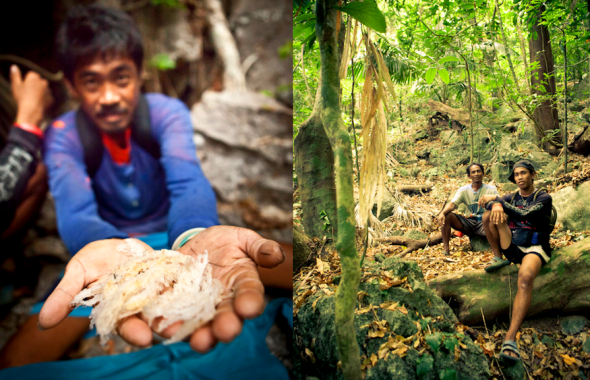
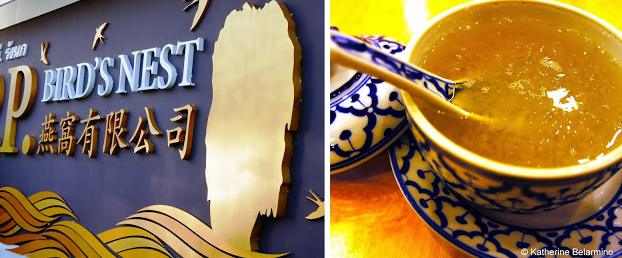
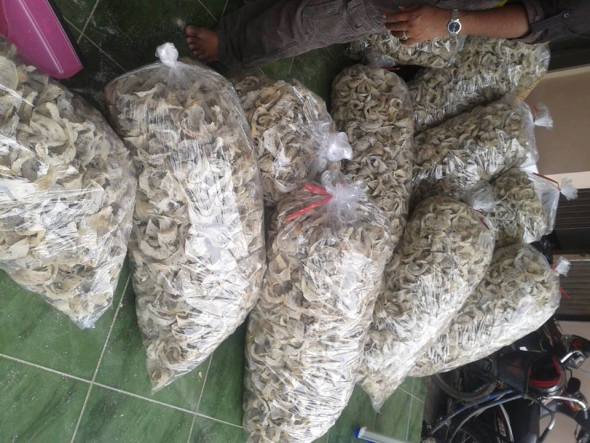
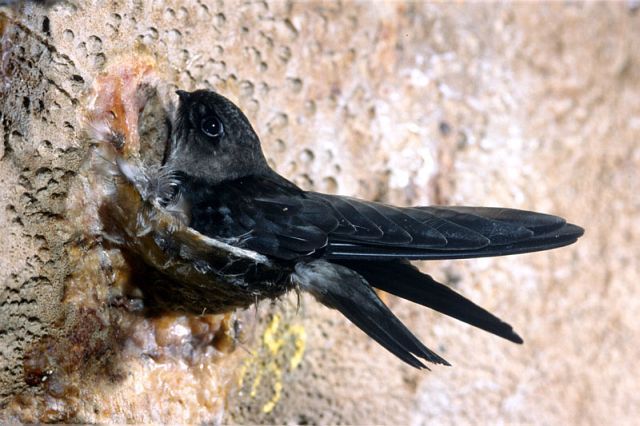
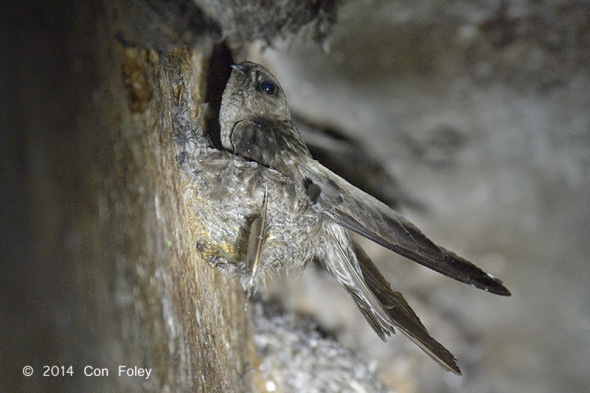

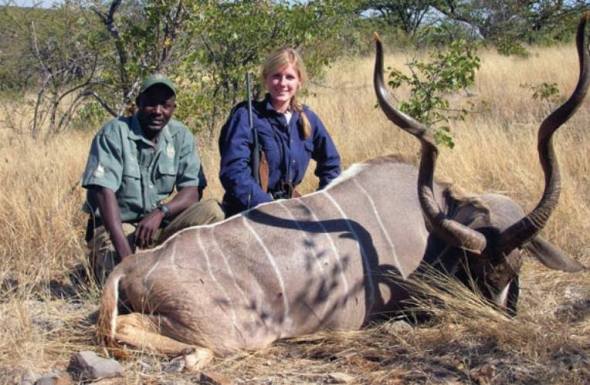
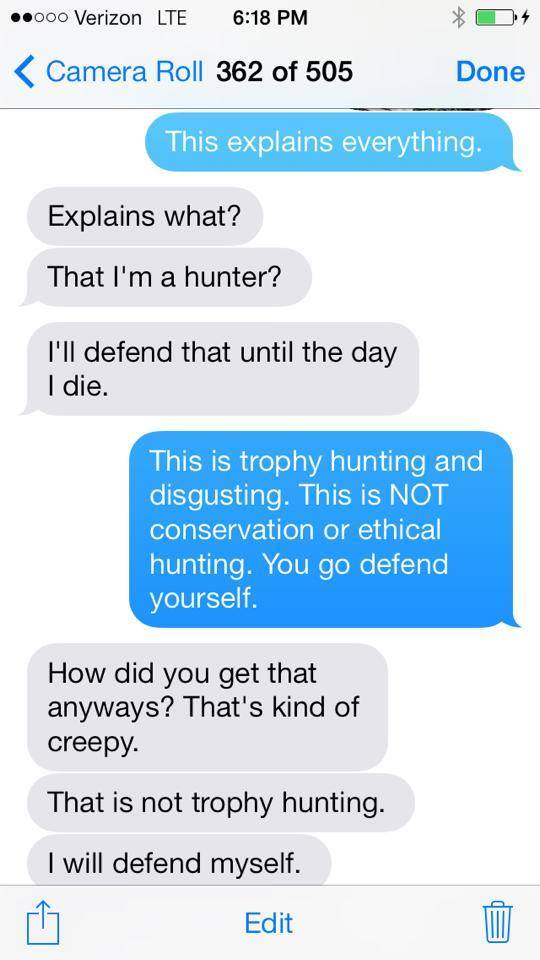
![IMG_3066[1]](../../2014/05/img_30661.jpg)
